The Sony a7 III was announced on February 27 2018 and created quite the stir.
It featured Eye-AF, 4k 24p video, dual card memory slots and a range of other features that no other camera was offering at that time for under two thousand dollars.
To take the mickey a little Sony described it as “the basic model”.
The a7III sold exceptionally well, possibly even exceeding Sony’s expectations because it was soon sold out and very difficult to buy for the next 6 months.
I ordered the a7III myself on day one and it still has a place in my gear bag today, but now that the Sony a7 IV has arrived is that about to change?
Keeping reading to find out…
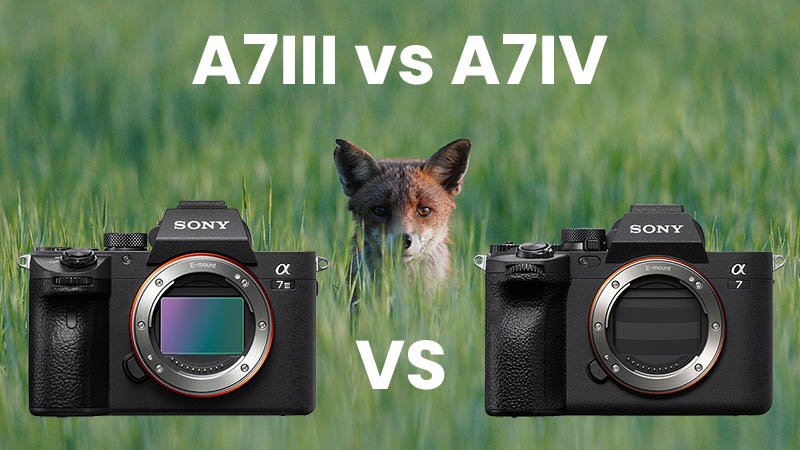
Sony A7 IV Forum & Facebook Group
If you are looking for further help and advice on the a7 IV or would simply like to share your photos and videos, then please head over to our friendly full-frame Forum. If you prefer Facebook then we also run the Sony A7 IV Shooters Group.
In this article I’ll be comparing the key differences between the Sony a7III and the new Sony a7IV.
But before we dive in, here’s a quick list of the key features that they share in common:
- NP-FZ100 battery
- ISO 100-32000, Expanded ISO 50 to ISO 204800
- Max 10 FPS (Frames Per Second)
- 1/8000 to 30 sec shutter speed
Summary
The a7 IV inherits many features from the Sony a7S III, such as the improved body and controls, vari-angle display, new touch menu, CFexpress Type-A support, live tracking, 10-bit internal recording and S-Cinetone just to mention a few. Then it also adds Bird Eye-AF from the flagship Sony a1.
Although 33 megapixels is still some way off the 61 megapixels offered by the a7R IV, it’s still a nice improvement on the 24 megapixels of the a7III, and will allow you to crop in a little closer or take advantage of the APS-C mode and still retain a 15 megapixel (4608 x 3072) image.
The a7 IV however brings big improvements when it comes to the autofocus performance over both the a7III and a7R IV. The addition of real-time tracking for animals and birds will definitely help this new camera appeal more to wildlife photographers or photographers who like to shoot a little bit of everything.
I think if you are already an a7III owner and don’t feel like you are being held back in anyway, there’s probably little reason to upgrade other than to satisfy your GAS craving.
Key Spec Comparison
Before getting into the juicy details, let’s take a quick look at the key specifications for each camera. You’ll also find a complete specification comparison table at the end of this article.
| Specification | Sony A7 IV | Sony A7 III |
|---|---|---|
| Sensor: | 33.0MP 35mm full-frame, back-illuminated Exmor R CMOS Sensor | 24.2MP 35mm full frame, back-illuminated Exmor R CMOS Sensor |
| Processor: | BIONZ XR | BIONZ X |
| Dynamic Range: | 15 Stops | 15 Stops |
| ISO Sensitivity: | Still images: ISO 100-51200 (ISO numbers from 50 to 204800 can be set as expanded ISO), AUTO (ISO 100-12800, selectable lower limit and upper limit), Movies: ISO 100-51200 equivalent (ISO numbers up to 102400 can be set as expanded ISO), AUTO (ISO 100-12800, selectable lower limit and upper limit) | Still images: ISO 100-51200 (ISO numbers up from ISO 50 to ISO 204800 can be set as expanded ISO range.), AUTO (ISO 100-12800, selectable lower limit and upper limit), Movies: ISO 100-51200 equivalent(ISO numbers up ISO 102400 can be set as expanded ISO range.), AUTO (ISO 100-12800, selectable lower limit and upper limit) |
| Frames Per Second: | 10 FPS | 10 FPS |
| Autofocus Points: | 35 mm full frame: 759 points (phase-detection AF), APS-C mode with FF lens: 713 points (phase-detection AF), with APS-C lens: 575 points (phase-detection AF) / 425 points (contrast-detection AF) | 35mm full frame: 693 points (phase-detection AF), APS-C mode with full frame lens: 299 points (phase-detection AF), with APS-C lens: 221 points (phase-detection AF) / 425 points (contrast-detection AF) |
| Eye Autofocus: | Human, Animals, Birds, | Humans, Animals (mammals) |
| Stabilization (IBIS): | 5-axis (5.5-stops) | 5-axis (5-stops) |
| Video Resolution Max: | Full-width oversampled 4K from 7K, up to 30p, 4K/60p with Super35 / APS-C mode. | 4K / 30p |
| Recording Formats: | XAVC S, XAVC HS | XAVC S, AVCHD |
| Picture Profiles: | Yes (Off / PP1-PP11) Parameters: Black level, Gamma (Movie, Still, S-Cinetone, Cine1-4, ITU709, ITU709 [800%], S-Log2, S-Log3, HLG, HLG1-3), Black Gamma, Knee, Color Mode, Saturation, Color Phase, Color Depth, Detail, Copy, Reset | Yes (Off / PP1-PP10) Parameters: Black level, Gamma (Movie, Still, Cine1-4, ITU709, ITU709 [800%], S-Log2, S-Log3, HLG, HLG1-3), Black Gamma, Knee, Color Mode, Saturation, Color Phase, Color Depth, Detail, Copy, Reset |
| Electronic Viewfinder (EVF): | 3.68 million dots | 2.36 million dots |
| Display (LCD): | Vari-Angle LCD, 1 036 800 dots. | 921,600k dots, adjustable up by approx. 107 degrees, down by approx. 41 degrees. |
| Image Buffer: | JPEG Extra fine L: over 1000 frames, JPEG Fine L: over 1000 frames, JPEG Standard L: over 1000 frames, RAW: over 1000 frames, RAW & JPEG: over 1000 frames, RAW (Lossless Compressed): over 1000 frames, RAW (Lossless Compressed) & JPEG: over 1000 frames, RAW (Uncompressed): over 1000 frames, RAW (Uncompressed) & JPEG: 828 frames | JPEG Extra fine L: 163 frames, JPEG Fine L: 172 frames, JPEG Standard L: approx. 177 frames, RAW: 89 frames, RAW & JPG: 79 frames, RAW (Uncompressed): 40 frames, RAW (Uncompressed) & JPG: 36 frames |
| Shutter Speed: | 1/8000 to 30 sec | 1/8000 to 30 sec |
| Memory Card Slots: | Two memory card slots. CFexpress Type A + UHS-II/I SD cards are supported in Slot 1. Only UHS II/I SD cards are supported in slot 2. | Two Slots. UHS II/I SD cards are supported in slot 1, only UHS-I SD cards are supported in slot 2. Sony Memory Stick PRO Duo, Memory Stick PRO-HG Duo, Memory Stick Micro are also supported. |
| Wireless: | Wi-Fi Compatible, (5GHz and 2.4GHz band) | Wi-Fi Compatible, (2.4GHz band) |
| Ports: | Yes, Micro USB (SuperSpeed USB (USB 3.2) compatible. Full-size HDMI. | Yes, Micro USB (SuperSpeed USB (USB 3.1 Gen 1) compatible. Micro-HDMI. |
| Battery Life Stills: | Approx. 520 shots (Viewfinder) / approx. 580 shots (LCD monitor) (CIPA standard) | Approx. 610 shots (Viewfinder) / approx. 710 shots (LCD monitor) (CIPA standard) |
| Weight: | Approx. 658 g (approx. 1 lb 7.3 oz) | Approx. 650 g / 1lb 7.0 oz |
| Price (MRRP): | $2,498.00 / £2,399.00 | $1,998.00 / £1,699.00 |
Sensor and Processor
The first and most obvious difference between these two cameras is the sensor and processor.
Although both cameras share a similar 35 mm full-frame back-illuminated sensor, that’s where the similarities end.
The a7III features a 24.2 megapixel 35mm Exmor R CMOS sensor, whereas Sony has decide to increase the resolution of the new sensor in the a7IV to 33.3MP.
If you often find yourself cropping images then you will certainly appreciate the additional 9 megapixels that takes the image resolution of the new a7IV up to 7008 x 4672 pixels, this compares with 6000×4000 pixels from the a7III’s 24.2MP sensor.
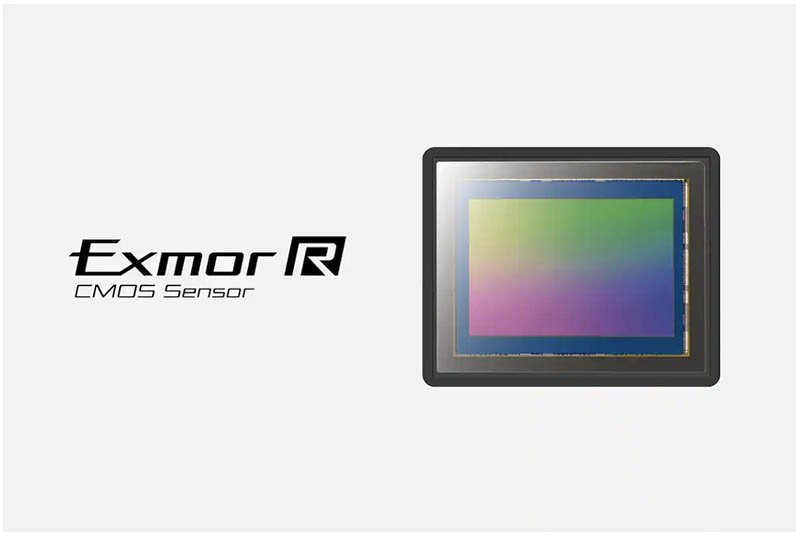
The a7IV also features a new advanced BIONZ XR processing engine that boosts speed by up to 8x compared with the BIONZ X engine found in the a7III. This helps to improve image quality, color reproduction, subject tracking and continuous shooting performance.
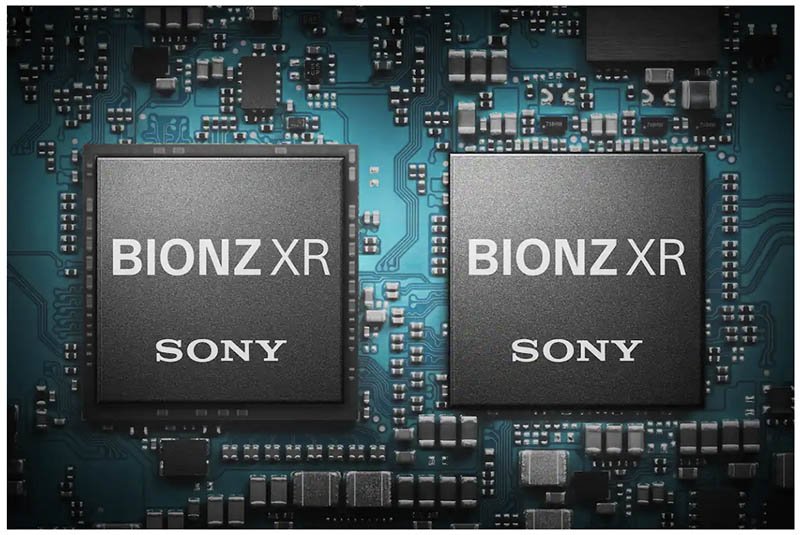
Both cameras share a standard range of ISO 100-51200 (expandable to ISO 50-204800 for stills and ISO 100-102400 for movies).
Still Image Recording Formats
The a7 IV gains a RAW lossless compression option for maximum processing flexibility, but the maximum burst rate drops from 10 to around 6 fps if you use it. The a7III only offers compressed and uncompressed RAW files along with JPEGs.
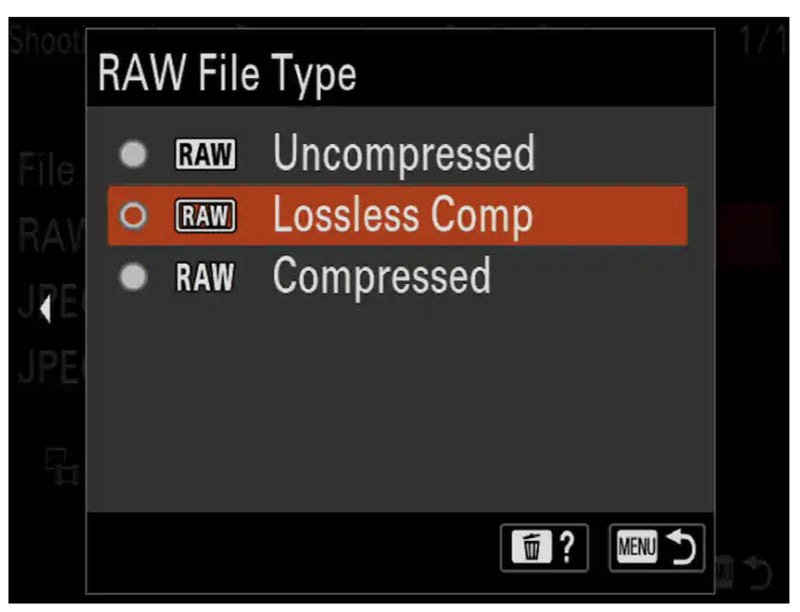
The a7 IV also gains the ability to capture 10-bit HEIF (High Efficiency Image File) images, rather than just the 8-bit JPEGs that you get from the a7III. You can also shoot standard DR images in 10-bit, with a choice of 4:2:2 or 4:2:0 chroma sub-sampling. HEIF images are on par with the best JPEG’s but offer approximately twice the compression resulting in much smaller file sizes.
The a7IV also gains 4:3 and 1:1 image aspect ratio options, along with the 3:2 and 16:9 options already found in the a7III.
APS-C / Super 35 Mode
Both cameras feature an APS-C / Super 35 Mode. This allows you to shoot full-frame lenses with a crop factor of 1.5x, or attach an APS-C lens. If you attach an APS-C lens without using APS-C mode, you will notice black bars on either side of your image, this is because an APS-C lens will not completely cover the full-frame 35mm sensor.
Although both cameras feature this option, when you enable it on the Sony a7 III your maximum image size will be 10 megapixels (3936 × 2624). However, because of the larger 33 megapixel sensor in the a7 IV, when you enable APS-C mode on this camera the maximum image size will be 14 megapixels (4608 x 3072).
Stabilization
Both cameras feature 5 axis in-body image stabilization (IBIS). However, the a7IV see’s a slight improvement here as the stabilization now offers 5.5EV of correction, this compares with 5.0EV of the a7III.
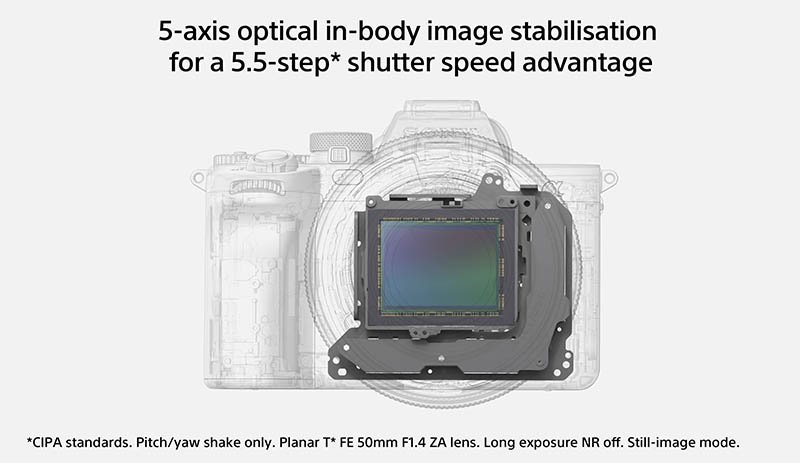
For movie shooters the a7IV also gains a new active stabilization mode that is not found in the a7III. This basically adds digital correction on top of the in-body stabilization, however there is a slight crop of around 1.1x. Here’s an example video from Sony showing this feature in action.
Because the a7 IV also records gyro and lens data as metadata, you can use Sony Catalyst Browse/Prepare software to further smooth camera shake and make adjustments to image stabilisation even after shooting.
Shutter
Both the a7III and a7IV feature a mechanical shutter and electronic shutter. Although I’ve not yet seen any mention about improvements to either shutter in the a7IV, hopefully Sony has made some changes to the mechanical shutter as there have been a number of failures with the a7III.
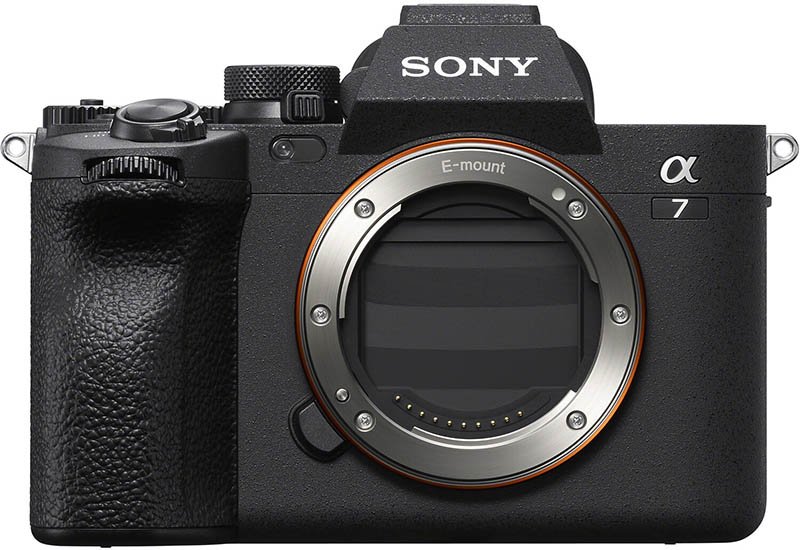
One new feature that the a7IV gains over the a7III is the option to close the mechanical shutter to protect the sensor when the camera is turned off. This is a feature that has trickled down from the Sony a1 and can also be found in the Sony a9II with firmware 2.0.
This should help to stop dust collecting on the sensor when lenses are being changed. If you already own the Sony a7III you are most likely very familiar with this persistent problem! So this is definitely a welcome addition.
Drive Speed and Buffer
Both the a7III and a7IV can shoot a maximum of 10 frames per second with both the mechanical and the electronic shutter, so there are no changes here. Also, if you shoot continuous and compressed RAW, then the image resolution drops from 14 bits per pixel to 12 bits for both cameras.
There are changes to the buffer depth. In my own memory card tests I discovered that the a7III can shoot around 166 Extra Fine JPEGS, 106 Compressed RAW or 58 Uncompressed RAW files when using a SanDisk Extreme Pro UHS-II memory card in slot one before hitting the buffer.
The a7IV has a much larger buffer and according to Sony will now shoot over 1000 Extra Fine JPEGS, over 1000 Compressed RAW and over 1000 Uncompressed RAW files when using the faster CFexpress Type-A cards. I hope to be able to test this myself at some point as I’m curious to how these figures compare when using the slower but more affordable UHS-II memory cards.
The a7IV also allows you to access menu functions whilst the camera is still writing to the buffer, the a7III prevents many changes whilst writing to the buffer.
Autofocus
The autofocus system in the a7III was fantastic when first released, but it has unfortunately missed out on recent updates like real-time tracking, bird eye af and eye tracking in movies. The a7IV powered by the new BIONZ XR processing engine brings a lot of welcome updates to this department. Let’s take a look at these now.
Phase Detection AF Area and Points
The a7III features 693 phase detection points in full-frame mode covering 93% of the image area. In APS-C mode with a full frame lens you get 299 phase detection points and with an APS-C lens this drops to 221 points. There are also 425 contrast detection points.
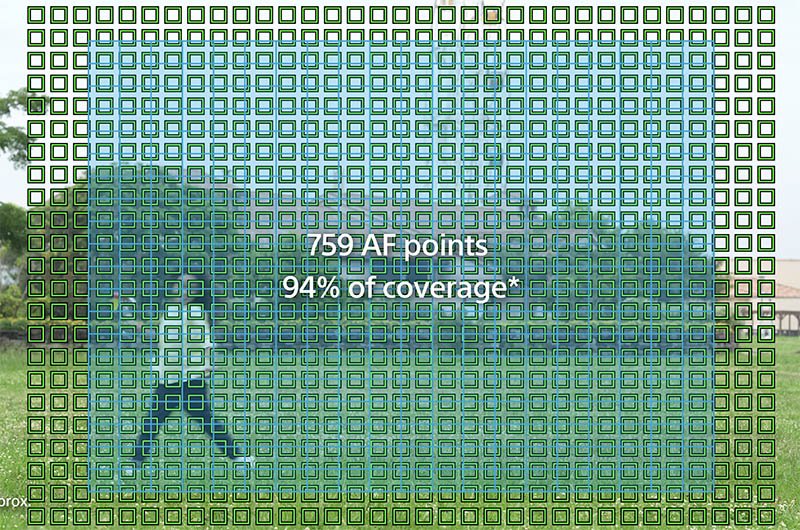
The a7IV improves on this by adding 759 phase detection points in full-frame mode covering 94% of the image area, this is the same number of points as the Sony a1. In APS-C mode with a full frame lens you now get 713 phase detection points and with an APS-C lens 575 points. The number of contrast detection points remains the same at 425.
Phase Detection Autofocus (PDAF) down to F22
The a7III only supports phase detection down to F11, after this the slower contrast detection will take over. With the a7IV phase detection is now supported all the way down to F22.
This should be a welcome improvement for wildlife and sports photographers with the Sone FE 200-600 lens who want to make use of the 2x teleconverter, since this takes the 200-600 to F13 at 1200mm and the a7III would swap to the slower contrast detection, also only the first shot of a continuous burst would be in focus. Now with the a7IV this is no longer an issue.
Lowlight AF Performance
The Sony a7 IV offers a one-stop improvement in lowlight AF performance effective down to light levels as low as EV-4 (with a F2.0 lens), this compares with EV-3 for the a7III. This helps to provide more reliable autofocus in dark shooting environments.
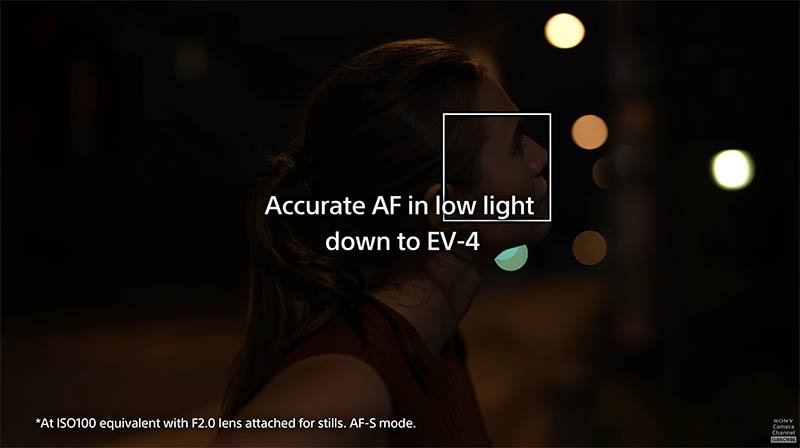
AI-based Real-time Eye AF and Real-time Tracking
Although the a7III added Animal Eye AF and Real Time Eye AF with a firmware update (v3.00), this only worked for stills and not movies, it also lacked real-time tracking.
The superior processing power of the BIONZ XR engine found in the new a7IV has led to improvements in both Real-time Eye AF and Real-time Tracking features. Improved face detection translates into 30% better eye-detection accuracy compared to the a7III, while faster image processing yields higher accuracy when the subject is looking up, down, or sideways.
While some cameras like the Sony a9 received a firmware update that added real-time tracking, the a7III sadly missed out. Fortunately the a7IV now gets Real-time Tracking that allows you to select your subject and then let the camera keep track of it, even when your subject is obscured by obstacles or other subjects.
Real-time eye detection and tracking for both humans and animals is now also available in video mode on the a7IV.
Real-time Eye AF for Birds
The flagship Sony a1 was the first camera to introduce bird-eye detection, fortunately this has now made its way into the a7IV and is available in both stills and movie modes.
You will need to set the subject detection to birds, but once set you can now track the eyes of birds both perched and in flight. Here’s a video from Sony demonstrating how this works:
Video
The a7 III was the first a7 camera to support 4K video capture with oversampled 24p capture from the full width of its sensor, although a 1.2x crop is applied for 30p shooting. Video footage was captured in 8-bit 4:2:0 internal up to 100Mbps, and 4:2:2 external.
The a7 IV moves the needle considerably, adding 10-bit 4:2:2 internal and external capture to increase the processing flexibility of Log footage. You can now also shoot 4k 30p without a crop thanks to the larger 33MP sensor, with footage oversampled from a 4.6K region.
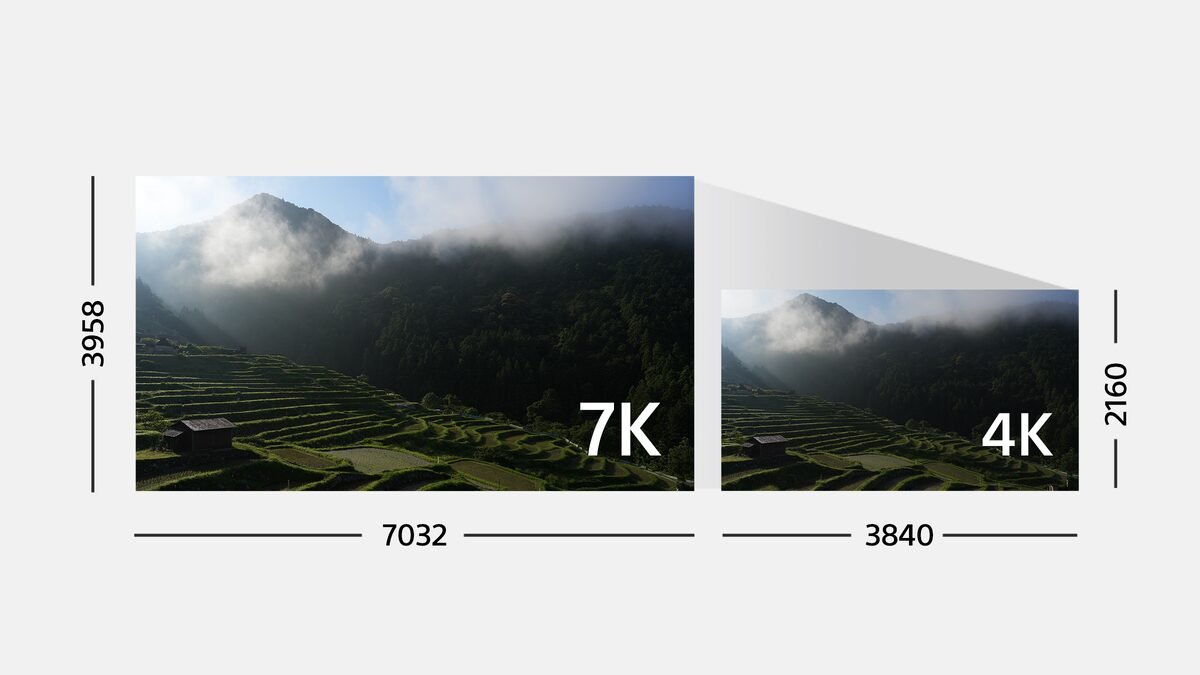
The a7IV also supports 4K/60p, but this is only when shooting in APS-C/Super 35 mode, which means a 1.5x crop is applied.
Both cameras support S&Q mode up to 120p when shooting in Full-HD, although the a7IV now supports 100M 4:2:2 10bit.
As mentioned in the Autofocus section above, the a7IV adds support for Eye AF and Real-Time Tracking in video mode, which should help the camera stick to your subject whether they are human, animal or bird.
The a7IV also gains some additional features that you won’t find in the a7III:
XAVC HS Codec Option (H.265)
In addition to adding 10-bit 4:2:2, the a7IV also gains the XAVC HS codec option (H.265) to achieve twice the compression efficiency of AVC/H.264 encoding that the a7III uses. This results in superior image quality and smaller, space-saving file sizes.
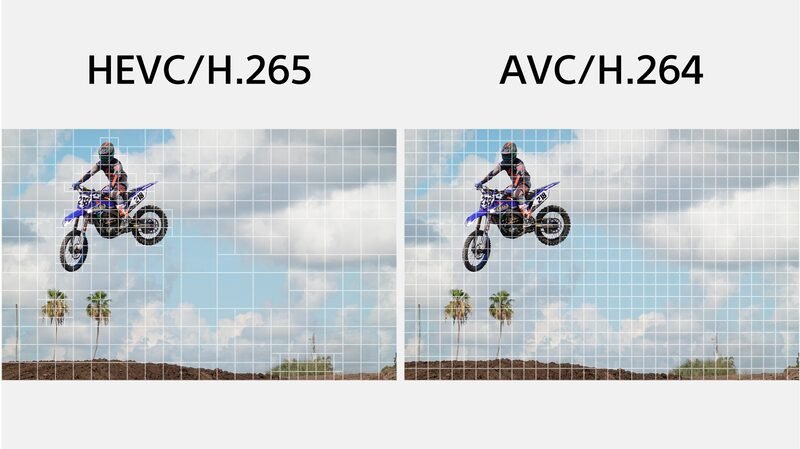
All-Intra Encoding
All-Intra recording encodes every frame independently, at bitrates of up to 600Mbps. This allows for capturing complex motion more accurately and allowing more efficient editing workflows.
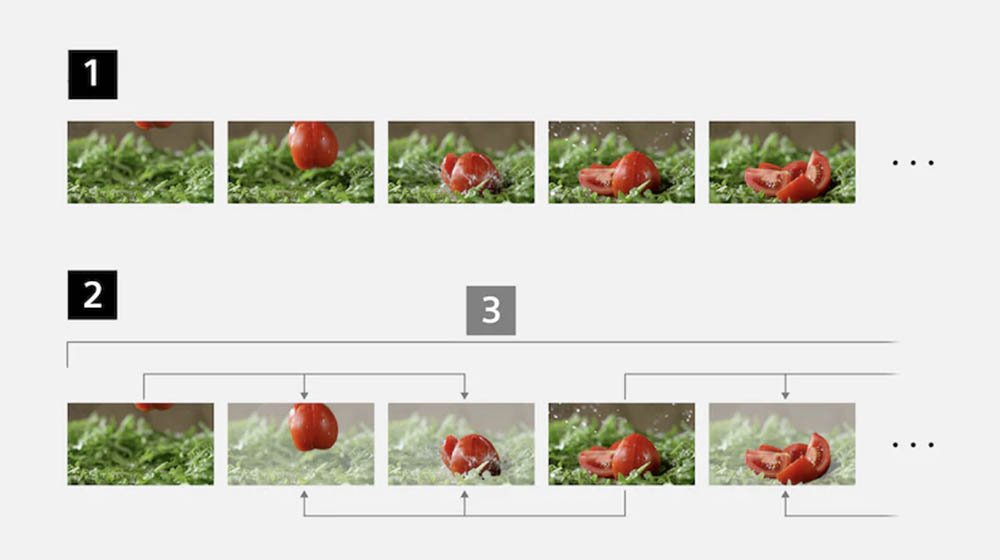
S-Cinetone & Creative Look Presets
S-Log2, S-Log3 and HLG curves are available on both cameras, however the a7 Mark IV also gets S-Cinetone. The S-Cinetone colour matrix is based on technology acquired through development of CineAlta cameras such as the VENICE and produces an impressive look with beautiful skin tones without post-editing.
Ten Creative Look presets create other interesting visual moods in-camera, with each look having 8 parameters that can be adjusted. Or you can use S-Log3 gamma to access the camera’s full dynamic range (15+ stops) for smoother post-production workflows.
The Creative Looks are supported for both video and stills, unlike the Creative Styles from the a7III which were limited to stills.
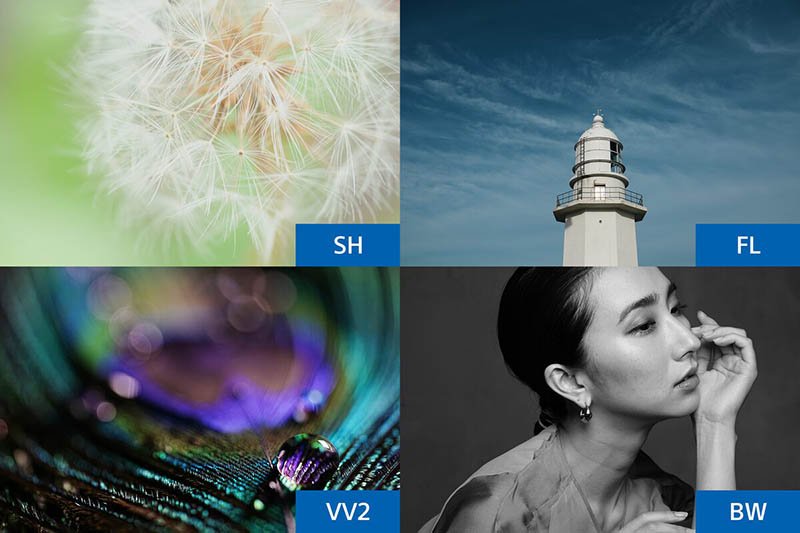
Soft Skin Effect
The a7 IV has built-in Soft Skin Effect that makes skin look bright and beautiful, softening wrinkles, blemishes and dull-looking areas while adding emphasis to the eyes and mouth. This feature is available for still shots, movies and live streaming.
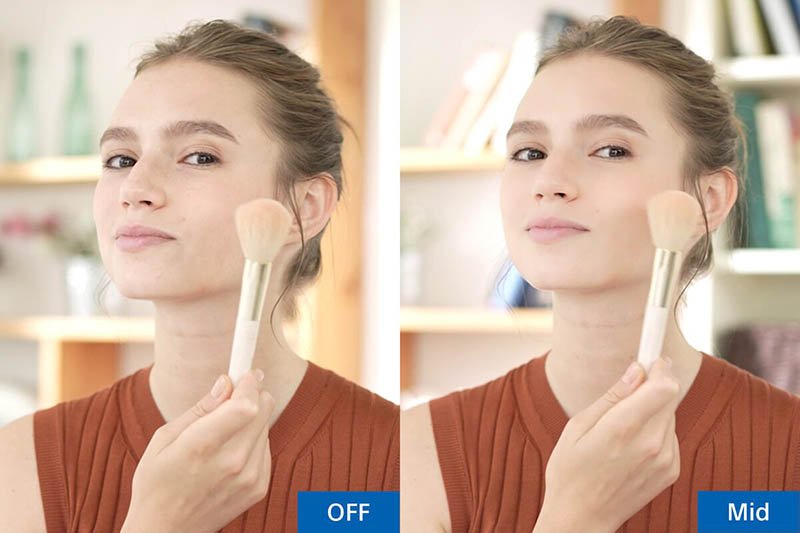
Recording Limit & Overheating
The a7IV joins Sony’s more recent Alpha camera’s by removing the 30 minute recording limit. You can now record until you either fill the memory card or drain the battery, that’s providing the camera does not overheat!
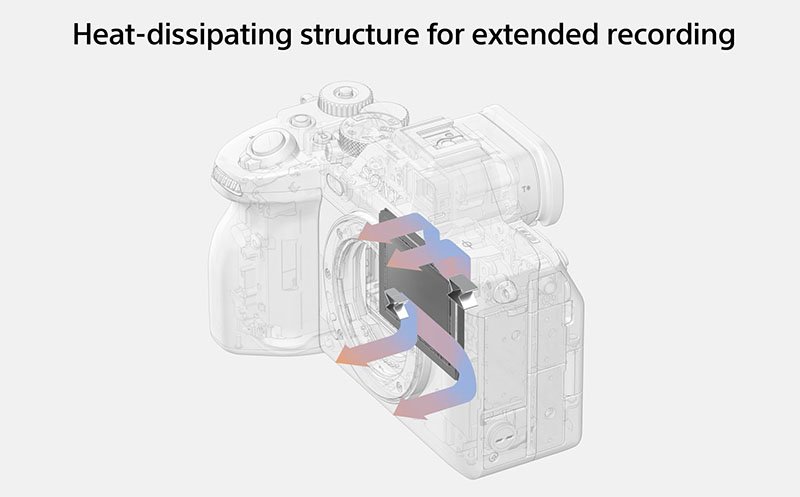
Fortunately when it comes to overheating the Sony a7IV inherits the passive cooling heat sink from the a1 and a7S III to help with heat dissipation, so hopefully overheating should be a thing of the past.
Breathing Compensation
A Breathing Compensation mode has been added that crops and resizes the video to cancel-out any change in a lens’s angle-of-view (AoV) as it focuses. In other words, there’s no distracting change of framing as you refocus.
However, this mode only works with select Sony lenses because the camera needs a profile of the breathing characteristics. You can find the full list of lenses that support this function on Sony’s website here.
Here’s a video from Sony to demonstrate Breathing Compensation.
Focus Map
Another feature that’s new to the a7IV is the Focus Map. This lets you easily visualise depth of field when you’re shooting video. When in use, a focus (depth map) is overlaid on a display of the live view in real time, so you can easily see which areas are in or out of focus.
Video AF Assist
Inherited from the Cinema Line FX6, the AF Assist function smoothly switches between auto and manual focus. Rack focusing is possible by rotating the focus ring to switch into MF and shift focus to a different subject, with AF resumed when ring rotation stops.
Shockless WB
Shockless WB allows you to set the speed at which the white balance switches during movie recording in order to make the white balance of the movie change more smoothly. The speed settings in the order of fastest to slowest are [1 (Fast)], [2], and [3 (Slow)] or Off.
Shot Marks
Two types of shot marks, used as “essence marks” or flags, can be added to recorded movie footage to mark favorite takes or scenes, and the main dial can be used to quickly navigate from one mark to the next during playback. You can access these shot marks later in post using Sony’s Catalyst Browse.
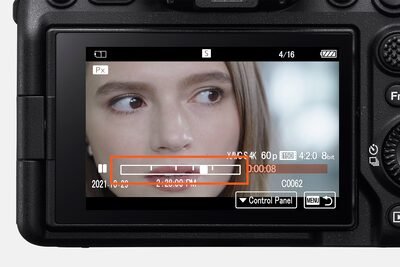
Flexible Exposure Mode
Flexible Exposure Mode allows you to select the method for setting the exposure (shutter speed and aperture) when shooting movies. With [P/A/S/M Mode], you can select from the P/A/S/M modes in the same way as the exposure mode for still images. With [Flexible Exp. Mode], you can switch between the automatic and manual settings separately for aperture value and shutter speed, like the exposure control system of a professional camera.
No LCD Blackout with External Recorder in 4k Mode
If you make use of an external recorder with the a7III when shooting 4k video, the display will unfortunately blackout, leaving you with only the recorders display. Thankfully this is no longer an issue with the a7IV as the LCD display remains active.
Additional AF Transition Speeds
You can now choose from 1-7 AF transition speeds instead of just slow, medium and fast, providing further control over transitions.
Camera Body & Controls
Personally I never found the a7III to be the most comfortable camera to hold, the grip was a little too small as were many of the buttons, making them especially difficult to use when wearing gloves during the winter months.
Thankfully the a7IV inherits a lot of the same ergonomic improvements that have found there way into the Sony a1, a7S III, a7R IV and a9II. These include a slightly larger body and grip, along with larger buttons like the AF-ON, Custom Buttons and Joystick. The tactile feedback has also been improved.
The a7IV gains a little weight and size at 658g (1 lb 7.3 oz) vs 650 g (1 lb 7.0 oz) for the a7III, but it’s unlikely a7III shooters who choose to upgrade are going to notice an additional 8 gramms. The dimensions are as follows:
- A7 III: 126.9 x 95.6 x 73.7mm
- A7 IV: 131.3 x 96.4 x 79.8 mm
Sony a7 III
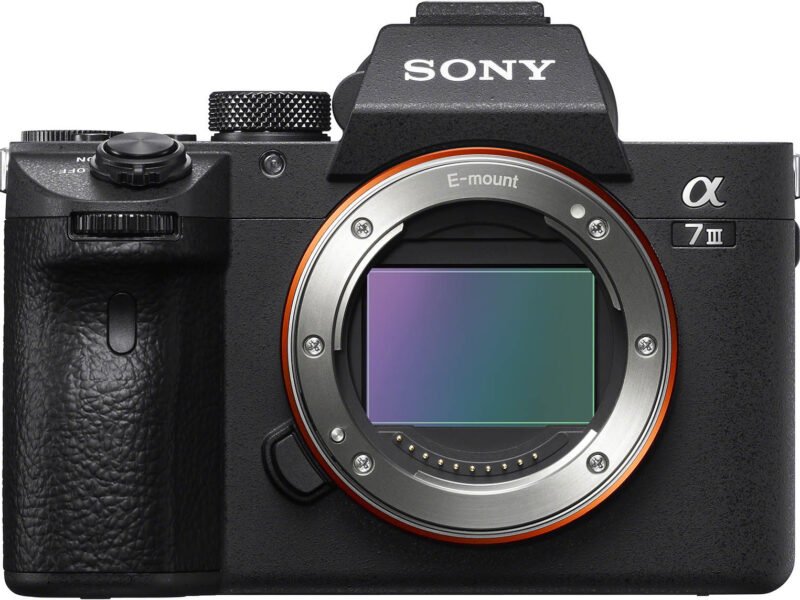
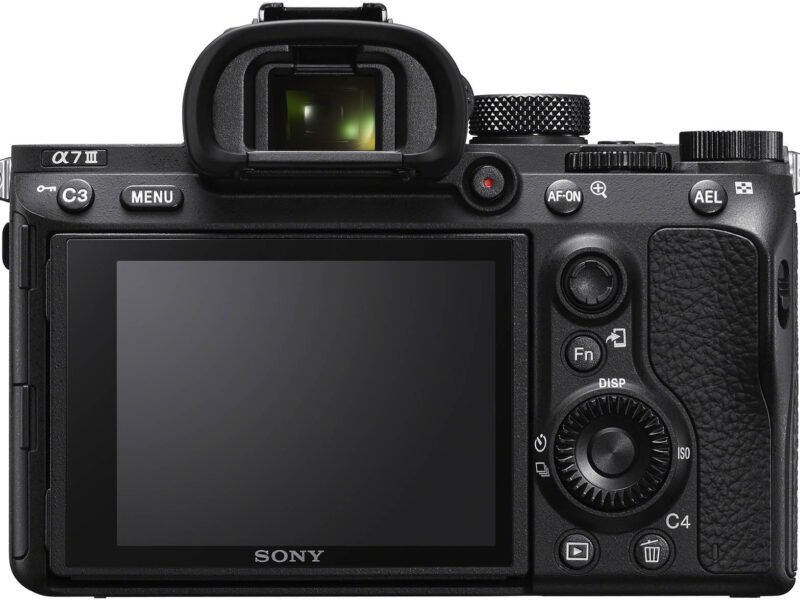
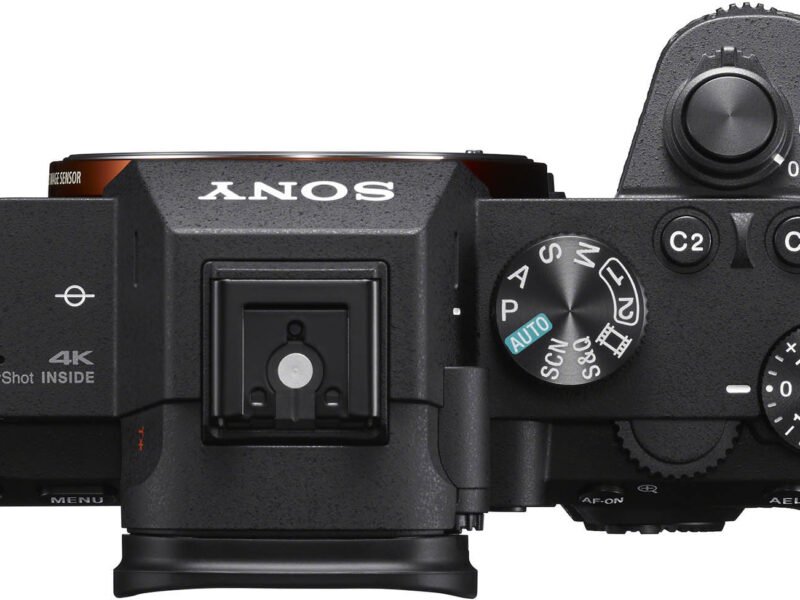
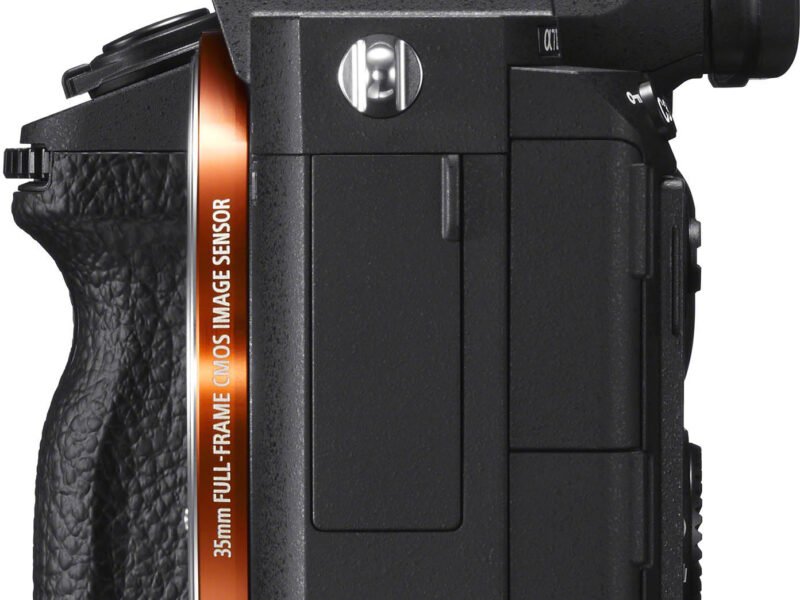

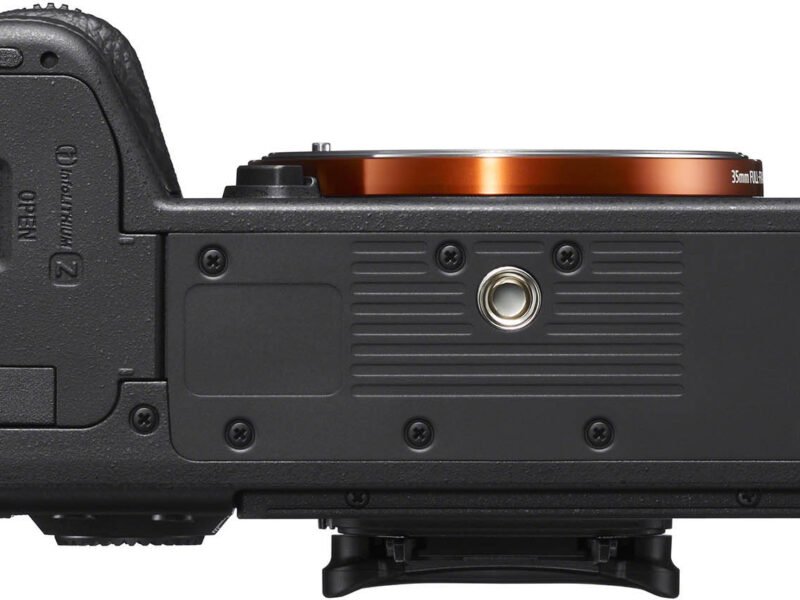
Sony a7 IV
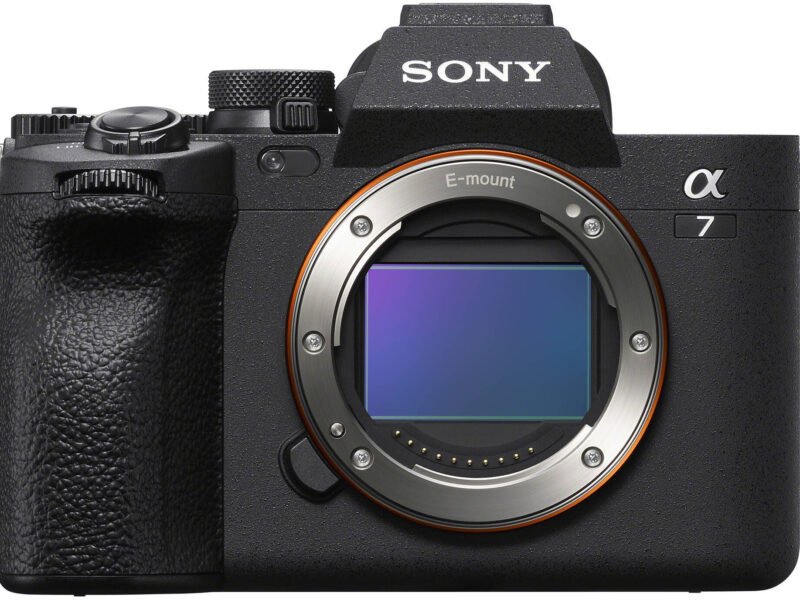
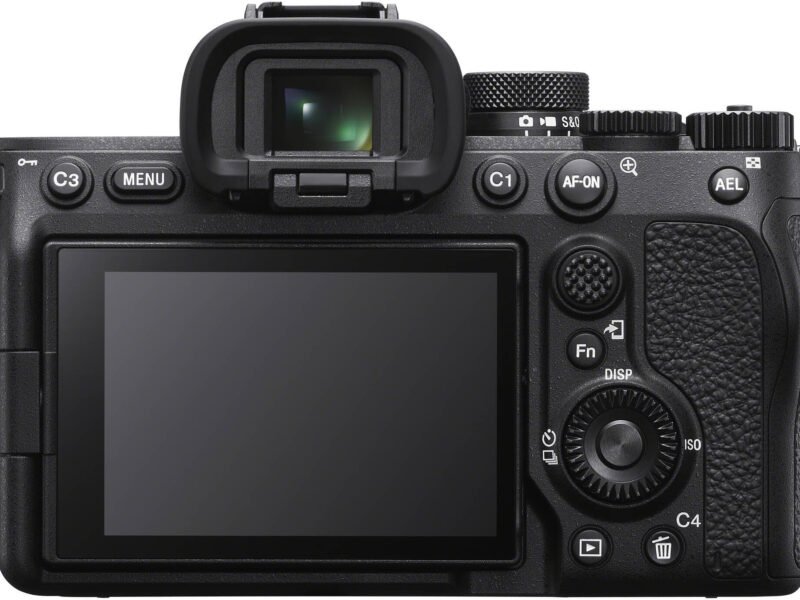
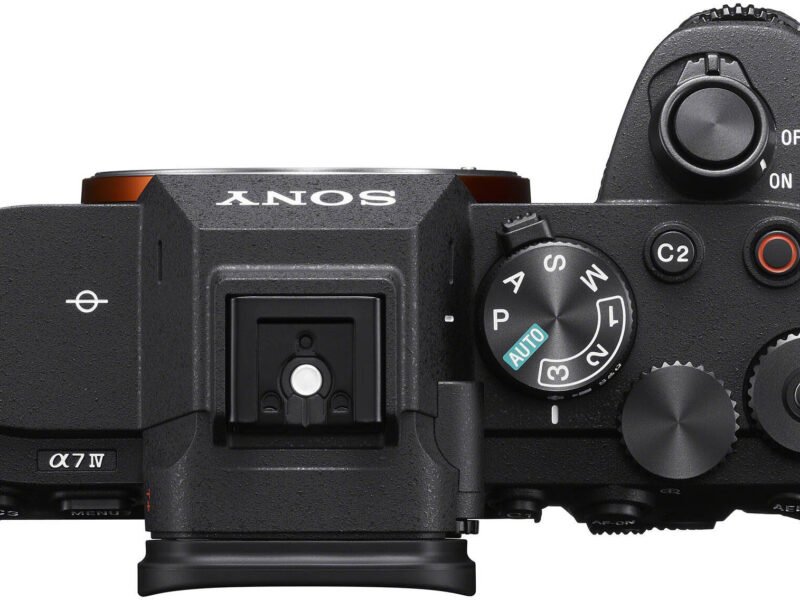
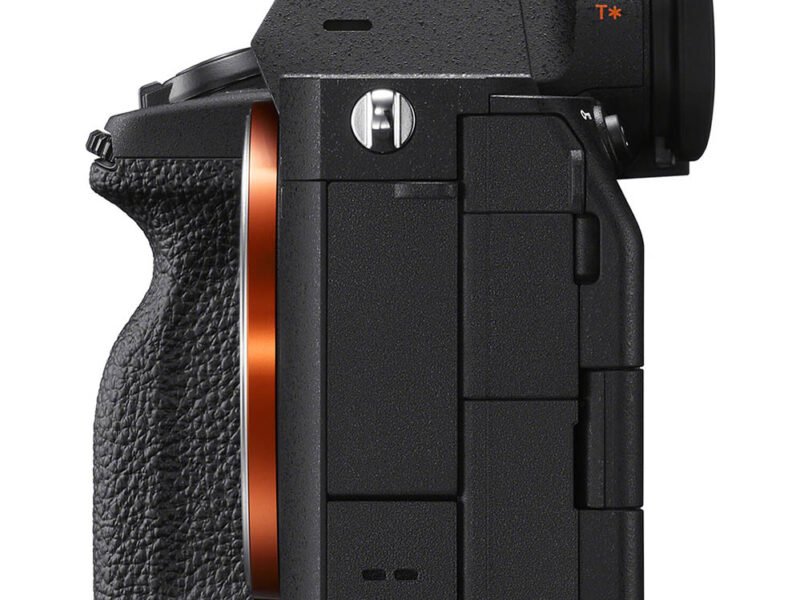
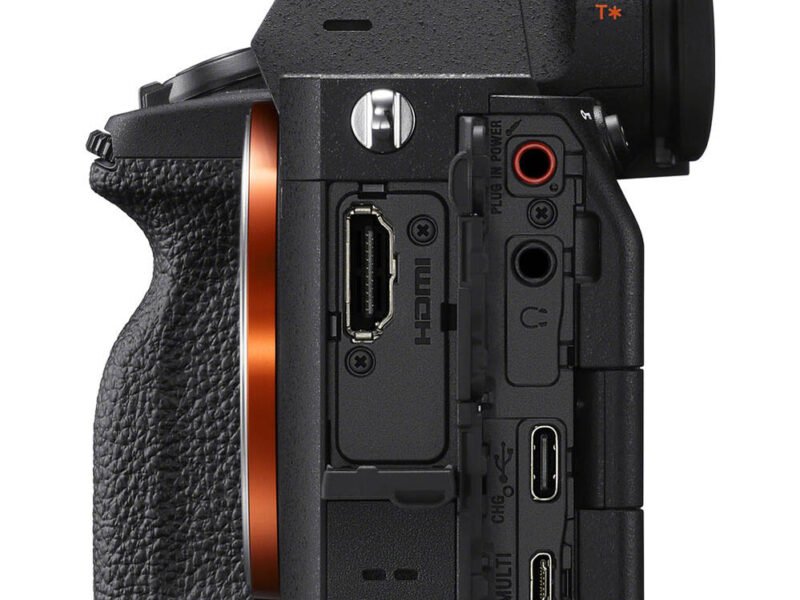
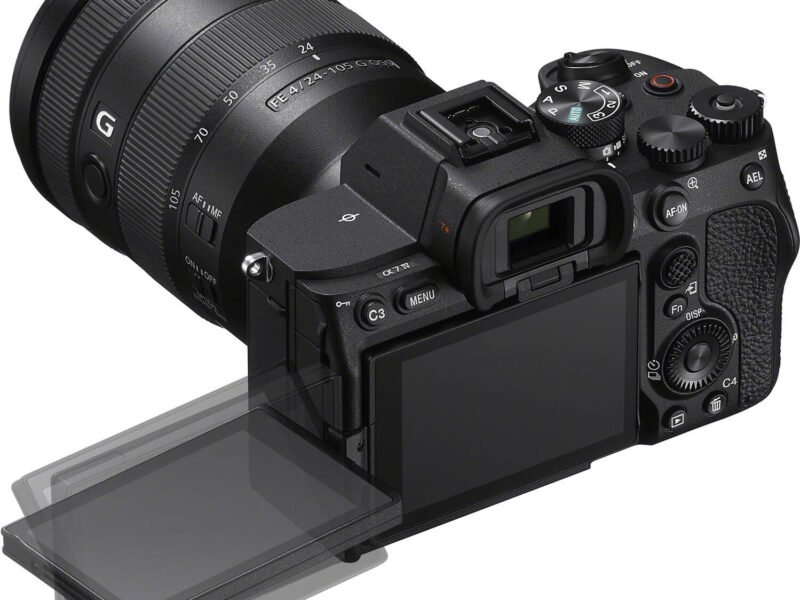
The video record button has been moved to the top of the camera on the a7IV, as opposed to the rear on the a7III.
The exposure compensation dial is clearly marked on the a7III, allowing you to easily increase or decrease the exposure. On can the a7IV however this dial is completely blank and can be fully customized, it also now has a lock button on top.
The a7IV also gains a new secondary dial found underneath the main P/S/A/M dial. This new dial allows you to quickly select between the Still/Movie/S&Q modes, on the a7III these were found on the main mode dial.
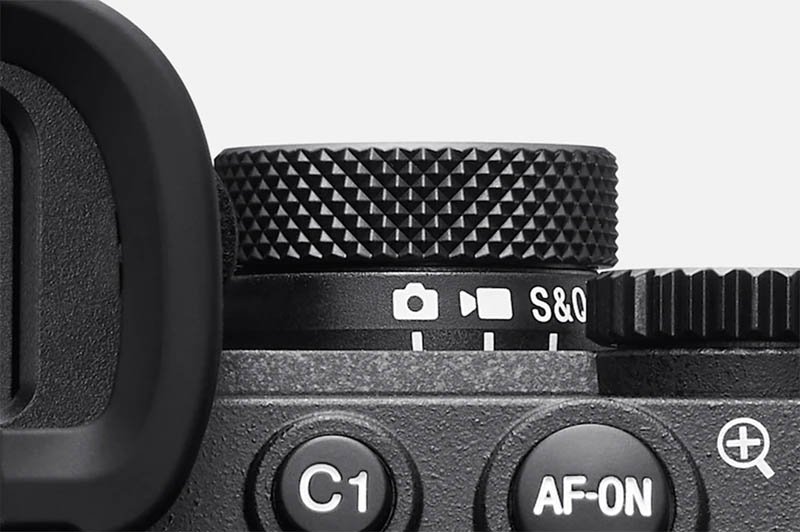
Also now when you select a mode, the a7IV will instantly change menus, button assignments and settings like aperture and shutter speed to correspond to your chosen mode. On the a7III if you often jumped between video and stills, you would need to change your settings each time which was quite tedious.
Both cameras use the Sony NP-FZ100 battery, although the a7III has a better CIPA rating at 710 frames versus 610 on the a7 mark IV model when using the LCD screen. I expect the improved resolution of the EVF and LCD combined with the faster Bionz XR processor require a little additional power.
Electronic Viewfinder and LCD Display
The Sony a7III features a 2.36 million dot OLED viewfinder, whereas the a7IV improves on this slightly with 3.68 million dots and also offers a 60fps and 120fps mode.
The EVF also has a proximity sensor that sits on top of the EVF on the a7 III, but it has been moved to the bottom of the EVF on the a7 IV just like with the Sony a1.
Both the size of the OLED panel (0.5″) and the magnification (0.78x) remain the same, as does the eye point length (23mm).
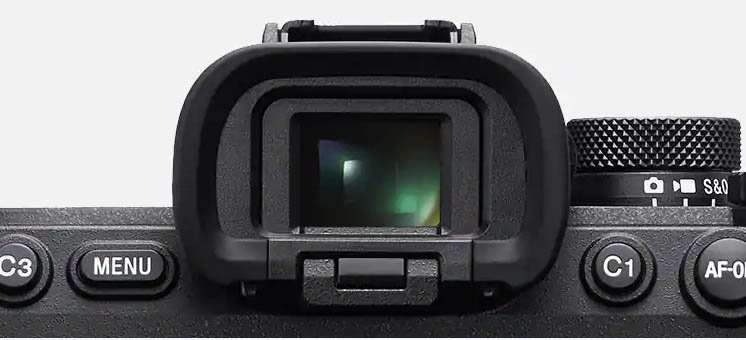
Where you’ll find a much bigger difference between the a7III and the a7IV is the LCD display.
The display on the a7III was limited to tilting up by approx. 107 degrees and down by approx. 41 degrees. The a7IV now inherits the same vari-angle display that can be found in the Sony a7SIII.
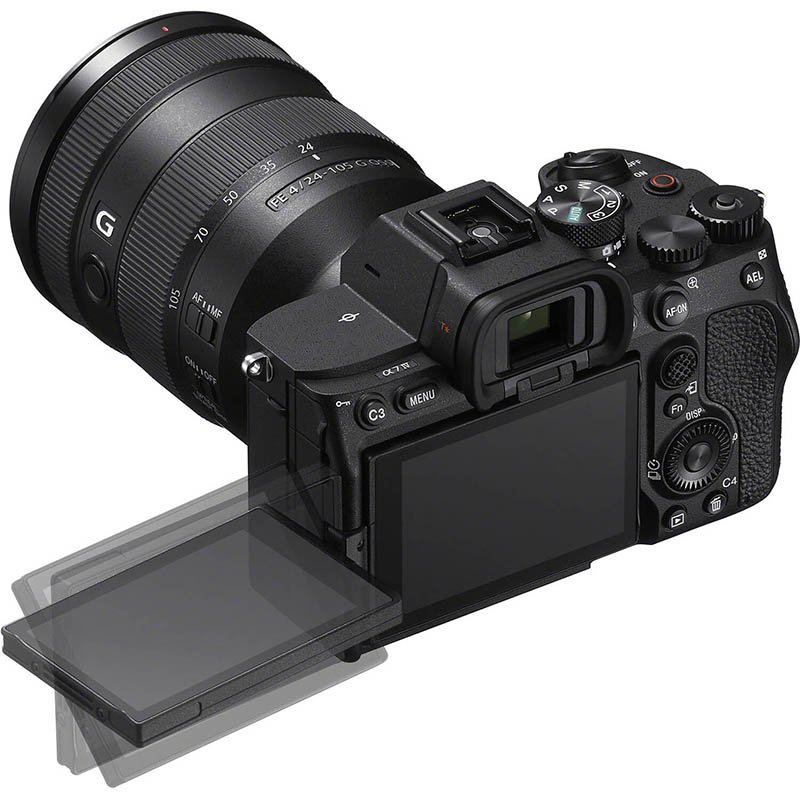
As shown in the image above, the display can now be flipped out to the side and rotated approx. 270 °. This provides a lot more potential viewing angles to help frame yourself or when you are shooting low on the ground.
The a7III display is comprised of 921,600k dots versus 1 036 800 dots for the a7IV’s display, a small improvement but nevertheless still welcome.
Although the display on the a7III is touch capable, these capabilities are limited to selecting a focus point and pinching to zoom. The a7IV display inherits a lot more touch features from the a7SIII and also gets a brand new touch friendly menu that will hopefully appease those who despised the menu in the a7III.
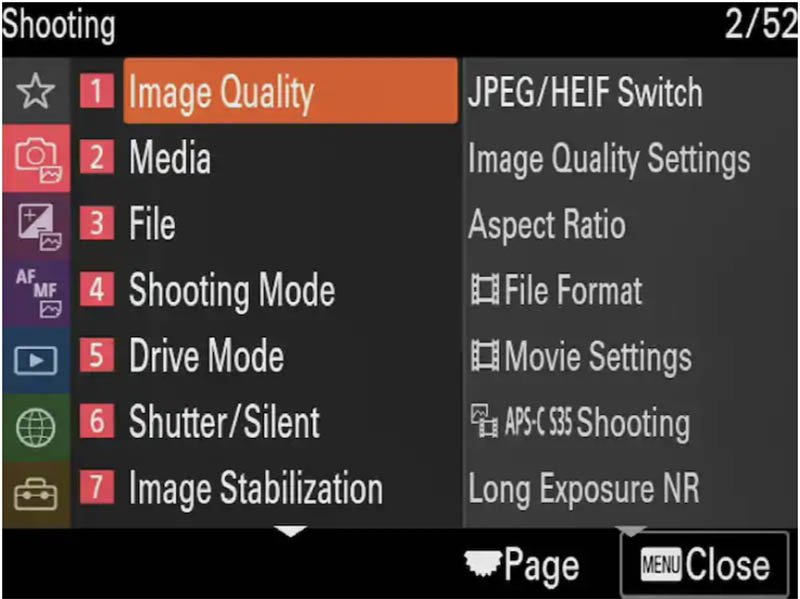
Memory Cards
The memory card door on the a7IV features a new slider unlocking switch, whereas the a7III uses a switchless sliding design.
Both cameras have two memory cards slots that allow you to roll-over to a second card when the first is full, or shoot to both cards simultaneously for backup purposes on important shoots.
The a7III supports the faster UHS-II SD cards in slot 1 but only the slower UHS-I cards in slot 2. Because of this setup if you did wish to shoot to both cards simultaneously you would always be limited to the speed of the slower UHS-I card in slot 2. This would limit the number of shots you can shoot before hitting the buffer and the time taken to clear the buffer. You can visit my Sony a7III Memory Card Guide to see my tests on this.
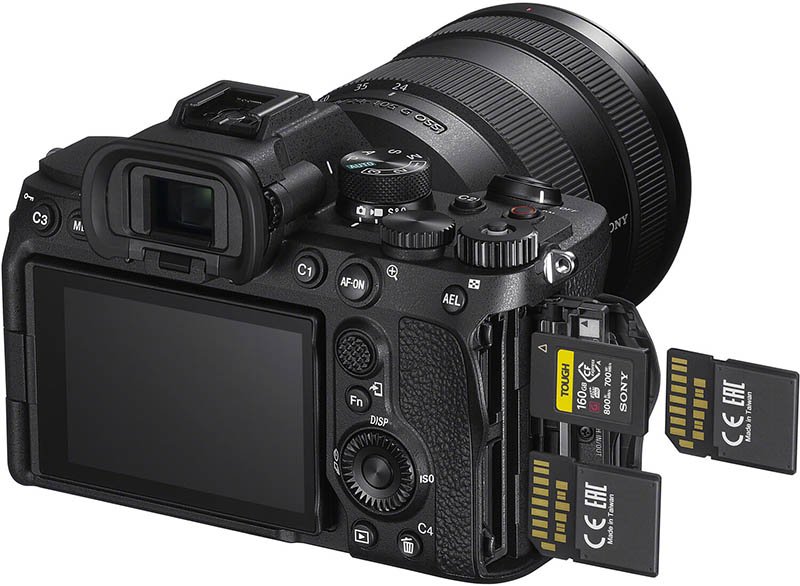
Fortunately the a7IV supports UHS-II cards in both slots and also the much faster CFexpress type A cards in slot 1 as well. But again, I expect that when you want to shoot simultaneously to both cards with a CFexpress Type-A card in slot 1 and a UHS-II card in slot 2 you will be limited to the speed of the UHS-II card, eliminating any benefit of the CFexpress Type-A card. The only benefit of using the CFexpress Type-A card would be when shooting to that single card.
You can now also save all of your camera’s setting to a memory card which can then be loaded onto another a7IV. Making copying settings between a7IV’s a piece of cake.
The a7IV does finally lose support for Sony’s Memory Sticks, but I don’t think too many people are still using these ancient memory cards.
You can visit my Sony a7IV Memory Card Guide for further advice on memory cards for the a7IV.
Connectivity
Both cameras can be shot tethered via their USB Type-C port that facilitates high-speed PC Remote transfer of large RAW data files, so you can quickly review images on a PC and continue shooting without delay. However, whereas the a7III supports USB 3.1 (5Gbps), the a7IV supports the faster USB 3.2 (10Gbps). The a7 IV also supports a wired LAN connection if you purchase a LAN to USB C adapter.
The a7IV can also be powered over USB-C by using a USB Power Delivery (PD) compatible power source, but it can’t charge the battery at the same time, you’ll need to turn the camera off to start charging. The a7 III can only be charged over USB-C, not powered.
The a7IV adds 5GHz band wireless in addition to the conventional 2.4GHz band that the a7III supports. The benefits of 5GHz communication include faster data transfer.
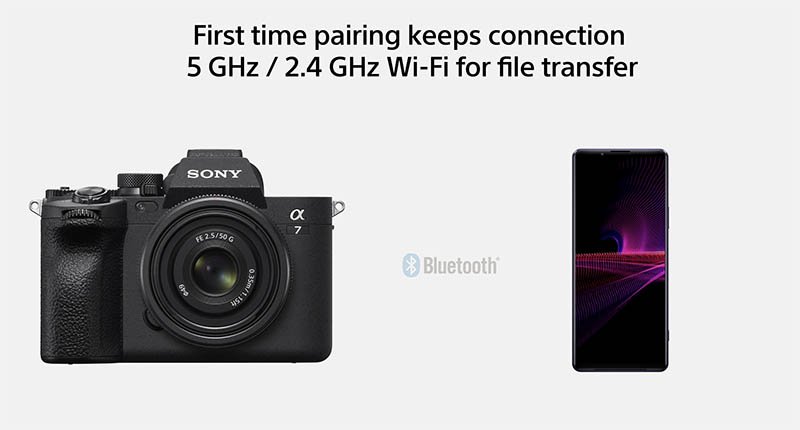
The a7IV loses the NFC chip from the a7III but both cameras support Bluetooth Standard Ver. 4.1.
Dropped connections whilst using Imaging Edge Mobile have been a common theme for many years, thankfully Sony has apparently improved the connection between the a7IV and Imaging Edge Mobile, so hopefully this will be a thing of the past.
The A7 IV gains the new Multi Interface (MI) Shoe that enables cable-less connection, directly transferring the digital audio signal for high-quality sound without degradation, while also supplying power and eliminating concerns about mic batteries. There’s also a new internal mic that features noise reduction.
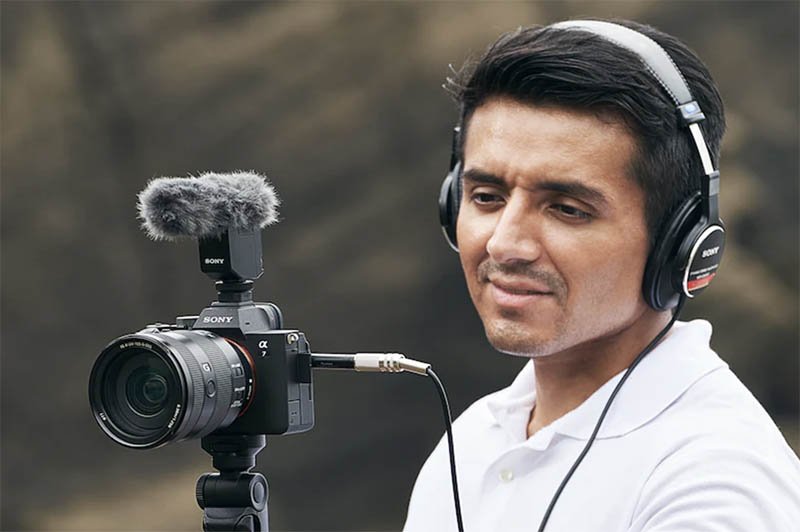
Whereas the a7III features the smaller Micro-HDMI port, the a7 IV features a full-size HDMI Type-A port for a more reliable connection when working with external recorders. There are also headphone and mic jacks on both cameras.
The a7IV is compatible with the same VG-C4EM battery grip used by the a7R IV, a9 II and a7S III. So if you have the Sony VG-C3EM grip for the a7III I’m afraid this grip is not compatible with the new body design of the a7IV.
Flash Sync Speed & External Control
The a7III supports a mechanical shutter sync speed of up to 1/250 sec in full-frame mode, this is identical to the a7IV. However, when shooting in APS-C mode the a7IV now supports a sync speed of up to 1/320 sec.
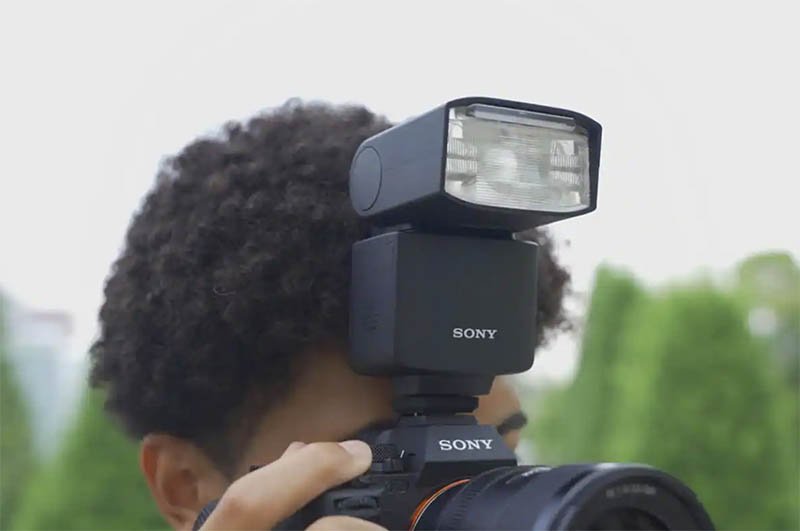
For greater convenience during shooting, compatible flash and radio wireless commander units connected to the a7 IV can now be controlled directly from the camera interface, something that is not possible with the a7III.
Live Streaming
Although the Sony a7III supports live streaming it does require the use of Sony’s Imaging Edge Webcam software.
With the a7IV you just need to connect the camera to a computer or smartphone via USB, then select “Live Stream (USB Streaming)”.
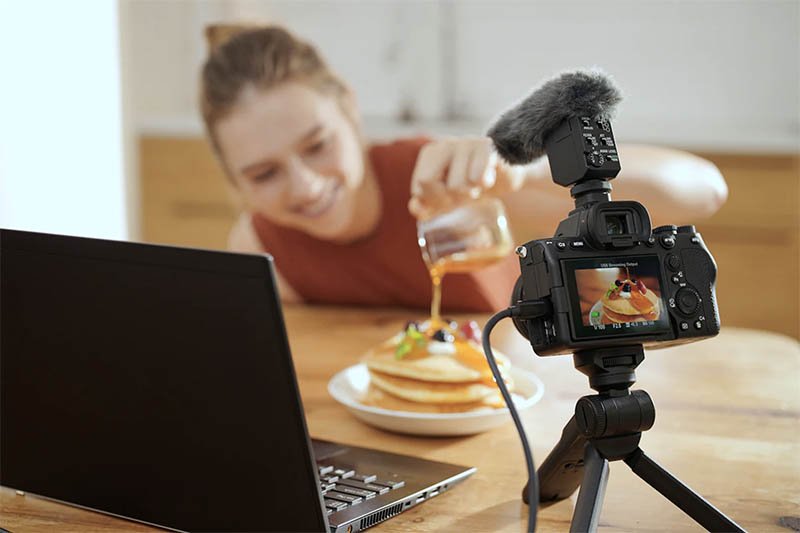
There are four options for USB streaming resolution & frame rate: 4K (2160) 15p / HD (1080) 60p / HD (1080) 30p and HD (720) 30p. You can also record internally while streaming just in case you lose your connection.
Firmware Updates
If you need to update the firmware of the a7III then you have to connect the camera to your computer via USB. For Mac OS users this is a nightmare as it triggers security flags and can be very difficult to install. Thankfully with the a7 IV you can now load the new firmware onto a memory card, insert this into the camera and perform the update. This is something that other camera manufacturers have been doing for years, so it’s nice to see that Sony has finally caught up.
Price
The a7III when first launched had a price tag of $1,998.00 / £1,999.00.
The a7IV has launched with a price tag of $2,498.00 / £2,399.00.
I don’t think you need me to do the maths, the a7IV price has increased quite substantially, probably due to a mix of inflation and chip shortages.
The a7III often see’s $200 shaved off its price in the US, but at the time of publishing it’s still priced at $1,998.00 in most stores. In the UK it’s a bit cheaper with a price tag of £1,699.00 at the time of publishing and there’s also £200 cashback available.
Additional Differences
The a7IV has a few more features that you won’t find on the a7III, these ones are worth a mention.
- The option to select a white or red focus frame color
- Playback and crop in camera when shooting jpeg
- New silent mode reduces camera noise from every aspect of the camera, not just the shutter
- Custom file names with the option to add the date. File numbers also carry on and don’t reset when you change memory cards.
- Variable Shutter lets you manually adjust the shutter speed to check the impact of flickering on the monitor.
A7III vs A7IV Summary
With almost 4 years between the a7III and the a7IV announcement, the a7IV was always going to pack a lot of new features that Sony has developed during this time.
The a7 IV inherits many features from the Sony a7S III, such as the improved body and controls, vari-angle display, new touch menu, CFexpress Type-A support, live tracking, 10-bit internal recording and S-Cinetone just to mention a few. Then it also adds Bird Eye-AF from the flagship Sony a1.
I purchased the Sony a7 III when it was first released and have used it pretty extensively since, creating many articles for this site and my YouTube channel. But because I also own the Sony a7R IV and enjoy shooting wildlife more than anything else these days, the a7III often gets left behind simply because I find the 61 megapixel sensor of the a7R IV more useful, especially when it comes to cropping in.
Although 33 megapixels is still some way off the 61 megapixels offered by the a7R IV, it’s still a nice improvement on the 24 megapixels of the a7III, and will allow you to crop in a little closer or take advantage of the APS-C mode and still retain a 15 megapixel (4608 x 3072) image.
The a7 IV however brings big improvements when it comes to the autofocus performance over both the a7III and a7R IV. The addition of real-time tracking for animals and birds will definitely help this new camera appeal more to wildlife photographers or photographers who like to shoot a little bit of everything.
Since I run the Sony Alpha Wildlife Shooters Group on Facebook I know that there are many wildlife photographers who are quite excited about the a7 IV and have already placed their orders.
For video shooters 10-bit internal recording and S-Cinetone are probably going to be the most interesting developments, along with eye-tracking in video. But some might be disappointed that 4k 60p is only in APS-C mode therefore results in a 1.5x crop.
I think if you are already an a7III owner and don’t feel like you are being held back in anyway, there’s probably little reason to upgrade other than to satisfy your GAS craving.
If you don’t already own the a7III then you’ll definitely want to consider if the additional features warrant the $500 increase in price. Will you be making the most of the improved autofocus performance, larger buffer, larger sensor, the new video features? If not, then you might be better off purchasing the a7III instead and perhaps spending what you save on a new lens, or maybe treating your other half so they don’t feel left out 🙂
Personally, I will be purchasing the a7 IV, but mainly so I can create articles for this site to help others with their decisions. I expect my Sony a7R IV will still see more use when shooting wildlife, at least until I can afford the Sony a1.
So which camera would you prefer to have in your gear bag? Let me know in the comments below.
Sony a7 IV Resources
Complete Specification Comparison – Sony A7IV vs A7III
I don’t want to leave any stones unturned so here’s the complete specification comparison between the two cameras.
Body
| Sony A7 IV | Sony A7 III | |
|---|---|---|
| Body Type | Mirrorless | Mirrorless |
| Body Material | Magnesium alloy | Magnesium alloy |
| Lens Mount | Sony E-mount | Sony E-mount |
| Lens Compatibility | Sony E-mount lenses | Sony E-mount lenses |
Image Sensor
| Sony A7 IV | Sony A7 III | |
|---|---|---|
| Aspect Ratio | 3:2 | 3:2 |
| Number of Pixels (Effective) | Approx. 33.0 megapixels | Approx. 24.2 megapixels |
| Number of Pixels (Total) | Approx. 34.1 megapixels | Approx. 25.3 megapixels |
| Sensor Type | 35 mm full frame (35.9 x 23.9 mm), Back-Illuminated Exmor R CMOS sensor | 35mm full frame (35.6×23.8mm), Back-Illuminated Exmor R CMOS sensor |
| Anti-Dust System | Charge protection coating on optical filter and image sensor shift mechanism | Charge protection coating on optical filter and image sensor shift mechanism |
Still Images
| Sony A7 IV | Sony A7 III | |
|---|---|---|
| Recording Format | JPEG (DCF Ver. 2.0, Exif Ver. 2.32, MPF Baseline compliant), HEIF (MPEG-A MIAF compliant), RAW (Sony ARW 4.0 format compliant) | JPEG (DCF Ver. 2.0, Exif Ver.2.31, MPF Baseline compliant), RAW (Sony ARW 2.3 format) |
| Image Size (Pixels) (3:2) | 35 mm full frame L : 7008 x 4672 (33 M), M : 4608 x 3072 (15 M), S : 3504 x 2336 (8.2 M), APS-C M : 4608 x 3072 (15 M), S : 3504 x 2336 (8.2 M) | 35mm full frame L: 6000 x 4000 (24M), M: 3936 x 2624 (10M), S: 3008 x 2000 (6.0M), APS-C L: 3936 x 2624 (10M), M: 3008 x 2000 (6.0M), S: 1968 x 1312 (2.6M) |
| Image Size (Pixels) (16:9) | 35 mm full frame L : 7008 x 3944 (28 M), M : 4608 x 2592 (12 M), S : 3504 x 1968 (6.9 M), APS-C M : 4608 x 2592 (12 M), S : 3504 x 1968 (6.9 M) | 35mm full frame L: 6000 x 3376 (20M), M: 3936 x 2216 (8.7M), S: 3008 x 1688 (5.1M), APS-C L: 3936 x 2216 (8.7M), M: 3008 x 1688 (5.1M), S: 1968 x 1112 (2.2M) |
| Image Quality Modes | RAW (Compressed / Lossless Compressed / Uncompressed), JPEG (Extra fine / Fine / Standard / Light), HEIF (4:2:0 / 4:2:2) (Extra fine / Fine / Standard / Light), RAW & JPEG, RAW & HEIF | RAW, RAW & JPEG (Extra fine, Fine, Standard), JPEG (Extra fine, Fine, Standard) |
| Picture Effect | Yes | 8 types: Posterization (Color), Posterization (B/W), Pop Color, Retro Photo, Partial Color (R/G/B/Y), High Contrast Monochrome, Toy Camera (Normal/Cool/Warm/Green/Magenta), Soft High-key , Rich-tone Monochrome |
| Creative Style | ST, PT, NT, VV, VV2, FL, IN, SH, BW, SE, Custom Look (1-6) | Standard, Vivid, Neutral, Clear, Deep, Light, Portrait, Landscape, Sunset, Night Scene, Autumn leaves, Black & White, Sepia, Style Box (1-6), (Contrast (-3 to +3 steps), Saturation (-3 to +3 steps), Sharpness (-3 to +3 steps)) |
| Picture Profile | Yes (Off / PP1-PP11) Parameters: Black level, Gamma (Movie, Still, S-Cinetone, Cine1-4, ITU709, ITU709 [800%], S-Log2, S-Log3, HLG, HLG1-3), Black Gamma, Knee, Color Mode, Saturation, Color Phase, Color Depth, Detail, Copy, Reset | Yes (Off / PP1-PP10) Parameters: Black level, Gamma (Movie, Still, Cine1-4, ITU709, ITU709 [800%], S-Log2, S-Log3, HLG, HLG1-3), Black Gamma, Knee, Color Mode, Saturation, Color Phase, Color Depth, Detail, Copy, Reset |
| Dynamic Range Functions | Off, Dynamic Range Optimizer | Off, Dynamic Range Optimizer (Auto/Level (1-5)), Auto High Dynamic Range (Auto Exposure Difference, Exposure Difference Level (1-6 EV, 1.0 EV step)) |
| Color Space | sRGB standard (with sYCC gamut), Adobe RGB standard and Rec. ITU-R BT.2100 standard (BT.2020 gamut) | sRGB standard (with sYCC gamut) and Adobe RGB standard, compatible with TRILUMINOS Color |
| 14bit RAW | Yes | Yes |
| Uncompressed RAW | Yes | Yes |
| Aspect Ratio Options | 3:2, 16:9, 4:3, 1:1 | 3:2, 16:9 |
Movie Recording
| Sony A7 IV | Sony A7 III | |
|---|---|---|
| Recording Format | XAVC S, XAVC HS | XAVC S, AVCHD format Ver. 2.0 compliant |
| Video Compression | XAVC S: MPEG-4 AVC/H.264, XAVC HS: MPEG-H HEVC/H.265 | XAVC S: MPEG-4 AVC/H.264, AVCHD: MPEG-4 AVC/H.264 |
| Audio Recording Format | LPCM 2 ch (48 kHz 16 bit), LPCM 2 ch (48 kHz 24 bit), LPCM 4 ch (48 kHz 24 bit), MPEG-4 AAC-LC 2 ch | XAVC S: LPCM 2ch, AVCHD: Dolby Digital (AC-3) 2ch, Dolby Digital Stereo Creator |
| Color Space | Rec. ITU-R BT.2100 standard compatible (BT.2020 gamut) | xvYCC standard (x.v.Color when connected via HDMI cable) compatible with TRILUMINOS Color |
| Picture Effect | Posterization (Color), Posterization (B/W), Pop Color, Retro Photo, Partial Color (R/G/B/Y), High Contrast Monochrome, Toy Camera (Normal/Cool/Warm/Green/Magenta), Soft High-key | |
| Creative Style | Standard, Vivid, Neutral, Clear, Deep, Light, Portrait, Landscape, Sunset, Night Scene, Autumn leaves, Black & White, Sepia, Style Box (1-6), (Contrast (-3 to +3 steps), Saturation (-3 to +3 steps), Sharpness (-3 to +3 steps)) | |
| Picture Profile | Yes (Off / PP1-PP11) Parameters: Black level, Gamma (Movie, Still, S-Cinetone, Cine1-4, ITU709, ITU709 [800%], S-Log2, S-Log3, HLG, HLG1-3), Black Gamma, Knee, Color Mode, Saturation, Color Phase, Color Depth, Detail, Copy, Reset | Yes (Off / PP1-PP10) Parameters: Black level, Gamma (Movie, Still, Cine1-4, ITU709, ITU709 [800%], S-Log2, S-Log3, HLG, HLG1-3), Black Gamma, Knee, Color Mode, Saturation, Color Phase, Color Depth, Detail, Copy, Reset |
| Image Size (Pixels) NTSC | XAVC S 4K: 3840 x 2160 (30p, 100M), 3840 x 2160 (24p, 100M), 3840 x 2160 (30p, 60M), 3840 x 2160 (24p, 60M), XAVC S HD: 1920 x 1080 (120p, 100M), 1920 x 1080 (120p, 60M), 1920 x 1080 (60p, 50M), 1920 x 1080 (30p, 50M), 1920 x 1080 (24p, 50M), 1920 x 1080 (60p, 25M), 1920 x 1080 (30p, 16M), AVCHD: 1920 x 1080 (60i, 24M, FX), 1920 x 1080 (60i, 17M, FH) | |
| Image Size (Pixels) PAL | XAVC S 4K: 3840 x 2160 (25p, 100M), 3840 x 2160 (25p, 60M), XAVC S HD:1920 x 1080 (100p, 100M), 1920 x 1080(100p, 60M), 1920 x 1080 (50p, 50M), 1920 x 1080 (25p, 50M), AVCHD:1920 x 1080 (50i, 24M, FX), 1920 x 1080 (50i, 17M, FH) | |
| Slow & Quick Motion (Shooting Frame Rate) | NTSC mode: 1 fps, 2 fps, 4 fps, 8 fps, 15 fps, 30 fps, 60 fps, 120 fps, PAL mode: 1 fps, 2fps, 3fps, 6fps, 12fps, 25fps, 50fps, 100fps | NTSC mode: 1fps, 2fps, 4fps, 8fps, 15fps, 30fps, 60fps, 120fps, PAL mode: 1fps, 2fps, 3fps, 6fps, 12fps, 25fps, 50fps, 100fps |
| Movie Functions | Audio Level Display, Audio Rec Level, PAL/NTSC Selector, Proxy Recording (1280 x 720 (Approx. 6 Mbps), 1920 x 1080 (Approx. 9 Mbps), 1920 x 1080 (Approx. 16 Mbps)), TC/UB, Auto Slow Shutter, Gamma Disp. Assist | Audio Level Display, Audio Rec Level, PAL/NTSC Selector, Yes (1280 x 720 (Approx.9Mbps)), TC/UB (TC Preset/UB Preset/TC Format/TC Run/TC Make/UB Time Rec), Auto Slow Shutter, REC Control, Clean HDMI Info. (ON/OFF selectable), Gamma Disp. Assist |
Recording System
| Sony A7 IV | Sony A7 III | |
|---|---|---|
| Location Information Link From Smartphone | Yes | Yes |
| Media | SD memory card, SDHC memory card (UHS-I/II compliant), SDXC memory card (UHS-I/II compliant), CFexpress Type A memory card | Memory Stick PRO Duo, Memory Stick PRO-HG Duo, Memory Stick Micro (M2), SD memory card, SDHC memory card (UHS-I/II compliant), SDXC memory card (UHS-I/II compliant), microSD memory card, microSDHC memory card, microSDXC memory card |
| Memory Card Slot | SLOT1: Multi slot for SD (UHS-I/II compliant) memory card / CFexpress Type A card, SLOT2: Slot for SD (UHS-I/II compliant) memory card | SLOT1: Slot for SD (UHS-I/II compliant) memory card, SLOT2: Multi slot for Memory Stick Duo/SD (UHS-I compliant) memory card |
| Recording Mode on Two Memory Cards | Simult. Rec, Sort, Auto Switch Media, Copy | Simult. Rec (Still), Simult. Rec (Movie), Simult. Rec (Still/,Movie), Sort (JPEG/RAW), Sort (Still/Movie), Auto Switch Media (On/Off), Copy |
Noise Reduction
| Sony A7 IV | Sony A7 III |
|---|---|
| Long exposure NR: On/Off, available at shutter speeds longer than 1 s, High ISO NR: Normal / Low / Off | Long exposure NR: On/Off, available at shutter speeds longer than 1 sec., High ISO NR: Normal/Low/Off |
White Balance
| Sony A7 IV | Sony A7 III | |
|---|---|---|
| White Balance Modes | Auto / Daylight / Shade / Cloudy / Incandescent / Fluorescent / Flash / Underwater / Color Temperature (2500 to 9900 K) & color filter / Custom | Auto / Daylight / Shade / Cloudy / Incandescent / Fluorescent / Warm White / Cool White / Day White / Daylight / Flash / Underwater / Color Temperature 2500 to 9900K & color filter G7 to M7 (57-step), A7 to B7 (29-step) / Custom |
| Shutter AWB Lock | Yes (Shut. Halfway Down / Cont. Shooting / Off) |
Focus
| Sony A7 IV | Sony A7 III | |
|---|---|---|
| Focus Type | Fast Hybrid AF (phase-detection AF / contrast-detection AF) | Fast Hybrid AF (phase-detection AF/contrast-detection AF) |
| Focus Sensor | Exmor R CMOS sensor | Exmor R CMOS sensor |
| Focus Point | 35 mm full frame: 759 points (phase-detection AF), APS-C mode with FF lens: 713 points (phase-detection AF), with APS-C lens: 575 points (phase-detection AF) / 425 points (contrast-detection AF) | 35mm full frame: 693 points (phase-detection AF), APS-C mode with full frame lens: 299 points (phase-detection AF), with APS-C lens: 221 points (phase-detection AF) / 425 points (contrast-detection AF) |
| Focus Sensitivity Range | EV-4 to EV20 (ISO100 equivalent with F2.0 lens attached) | EV-3 to EV20 (ISO100 equivalent with F2.0 lens attached) |
| Focus Mode | AF-A (Automatic AF), AF-S (Single-shot AF), AF-C (Continuous AF), DMF (Direct Manual Focus), Manual Focus | AF-A (Automatic AF), AF-S (Single-shot AF), AF-C (Continuous AF), DMF (Direct Manual Focus), Manual Focus |
| Focus Area | Wide / Zone / Center Fix / Spot / Expand Spot / Tracking | Wide (693 points (phase-detection AF), 425 points (contrast-detection AF)) / Zone / Center / Flexible Spot (S/M/L) /Expanded Flexible Spot/ Lock-on AF ( Wide / Zone / Center / Flexible Spot (S/M/L)/Expanded Flexible Spot) |
| Eye-AF | [Still images] Human (Right/Left Eye Select) / Animal (Right/Left Eye Select) / Bird, [Movie] Human (Right/Left Eye Select) / Animal (Right/Left Eye Select) / Bird | |
| Other Features | Predictive control, Focus lock, AF Track Sens. (Still), AF Subj. Shift Sensitivity (Movie), AF Transition Speed (Movie), Switch V/H AF Area, AF Area Regist., Circ. of Focus Point, Focus Map (Movie), AF Assist (Movie) | Eye-start AF (only with LA-EA2 or LA-EA4 attached (sold separately)), Lock-on AF, Eye AF, AF micro adjustment with LA-EA2 or LA-EA4 (sold separately), Predictive control, Focus lock, AF Track Sens, Swt.V/H AF Area, AF Area Regist. |
| AF Illuminator | Yes (with Built-in LED type) | Yes (with Built-in LED type) |
| AF Illuminator Range | Approx. 0.3 m – approx. 3.0 m (with FE 28-70 mm F3.5-5.6 OSS lens attached) | Approx. 0.3m – approx. 3.0m (with FE 28-70mm F3.5-5.6 OSS attached) |
| Focus Type with LA-EA3 (sold separately) | Phase-detection | Selectable (phase-detection, contrast-detection) |
Exposure
| Sony A7 IV | Sony A7 III | |
|---|---|---|
| Metering Type | 1200-zone evaluative metering | 1200-zone evaluative metering |
| Metering Sensor | Exmor R CMOS sensor | Exmor R CMOS sensor |
| Metering Sensitivity | EV-4 to EV20 (at ISO100 equivalent with F2.0 lens attached) | EV-3 to EV20 (at ISO100 equivalent with F2.0 lens attached) |
| Metering Mode | Multi-segment, Center-weighted, Spot (Standard / Large), Entire Screen Avg., Highlight | Multi-segment, Center-weighted, Spot, Spot Standard/Large, Entire Screen Avg., Highlight |
| Exposure Compensation | +/- 5.0 EV (1/3 EV, 1/2 EV steps selectable) | +/- 5.0EV (1/3 EV, 1/2 EV steps selectable) (with exposure compensation dial: +/- 3EV (1/3 EV steps)) |
| Exposure Bracketing | Bracket: Cont., Bracket: Single, 3/5/9 frames selectable. (Ambient light, Flash light) | Bracket: Cont., Bracket: Single, 3/5/9 frames selectable. With 3 or 5 frames, in 1/3, 1/2, 2/3, 1.0, 2.0, or 3.0 EV increments, with 9 frames, in 1/3, 1/2, 2/3, or 1.0 EV increments |
| AE Lock | Locked when shutter button is pressed halfway. Available with AE lock button. (On/Off/Auto) | Locked when shutter button is pressed halfway. Available with AE lock button (On/Off/Auto) |
| Exposure Modes | [Still images] Intelligent Auto (Auto) / Program Auto (P) / Aperture Priority (A) / Shutter Priority (S) / Manual Exposure (M), [Movie] Intelligent Auto (Auto) / Program Auto (P) / Aperture Priority (A) / Shutter Priority (S) / Manual Exposure (M) / Flexible Exp. Mode, [Slow & Quick Motion] Intelligent Auto (Auto) / Program Auto (P) / Aperture Priority (A) / Shutter Priority (S) / Manual Exposure (M) / Flexible Exp. Mode | AUTO (iAuto), Programmed AE (P), Aperture priority (A), Shutter-speed priority (S), Manual (M), Movie (Programmed AE (P) / Aperture priority (A) / Shutter-speed priority (S) / Manual (M) ), Slow & Quick Motion (Programmed AE (P) / Aperture priority (A) / Shutter-speed priority (S) / Manual (M) ), Scene Selection |
| ISO Sensitivity (Recommended Exposure Index) | Still images: ISO 100-51200 (ISO numbers from 50 to 204800 can be set as expanded ISO), AUTO (ISO 100-12800, selectable lower limit and upper limit), Movies: ISO 100-51200 equivalent (ISO numbers up to 102400 can be set as expanded ISO), AUTO (ISO 100-12800, selectable lower limit and upper limit) | Still images: ISO 100-51200 (ISO numbers up from ISO 50 to ISO 204800 can be set as expanded ISO range.), AUTO (ISO 100-12800, selectable lower limit and upper limit), Movies: ISO 100-51200 equivalent(ISO numbers up ISO 102400 can be set as expanded ISO range.), AUTO (ISO 100-12800, selectable lower limit and upper limit) |
| Anti Flicker Shooting | Yes | Yes |
| Scene Selection | Portrait, Sports Action, Macro, Landscape, Sunset, Night Scene, Night Portrait |
Viewfinder
| Sony A7 IV | Sony A7 III | |
|---|---|---|
| Viewfinder Type | 1.3 cm (0.5 type) electronic viewfinder (Quad-VGA OLED) | 1.3 cm (0.5 type) electronic viewfinder (color), XGA OLED |
| Number of Dots | 3 686 400 dots | 2 359 296 dots |
| Brightness Control (Viewfinder) | Auto/Manual (5 steps between -2 and +2) | |
| Color Temperature Control | Manual (5 steps) | |
| Field Coverage | 100% | 100% |
| Magnification | Approx. 0.78x (with 50 mm lens at infinity, -1m) | approx. 0.78 x (with 50mm lens at infinity, -1m-1) |
| Dioptre Adjustment | -4.0 to +3.0 m-1 | -4.0 to +3.0m-1 |
| Eye Point | Approx. 23 mm from the eyepiece lens, 18.5 mm from the eyepiece frame at -1m-1 (CIPA standard) | Approx. 23mm from the eyepiece lens, 18.5mm from the eyepiece frame at -1m-1(CIPA standard) |
| Finder Frame Rate Selection | STD 60 fps / HI 120 fps | |
| Display Contents | Histogram, Real-time image-adjustment display, Digital level gauge, Grid line, Focus check, Peaking MF, Zebra, Movie marker, Emphasized display during REC | Graphic Display, Display All Info., No Disp. Info., Digital Level Gauge, Histogram |
LCD Screen
| Sony A7 IV | Sony A7 III | |
|---|---|---|
| Monitor Type | 7.5 cm (3.0-type) type TFT | 7.5cm (3.0-type) type TFT |
| Number of Dots | 1 036 800 dots | 921,600 dots |
| Touch Panel | Yes | Yes |
| Brightness Control | Manual (5 steps between -2 and +2), Sunny Weather mode | Manual (5 steps between -2 and +2), Sunny Weather mode |
| Adjustable Angle | Opening Angle: Approx. 176 °., Rotation Angle: Approx. 270 °. | Up by approx. 107 degrees, Down by approx. 41 degrees |
| Display Selector (Finder/LCD) | Yes (Auto/Manual) | Yes (Auto/Manual) |
| Real-Time Image Adjustment Display (LCD) | On/Off | On/Off |
| Quick Navi | Yes | |
| Focus Magnifier | Yes, Focus Magnifier (35 mm full frame: 5.5x / 11.0x, APS-C: 3.7x / 7.3x) | Yes (35mm full frame: 5.9x, 11.7x, APS-C: 3.8x, 7.7x) |
| Zebra | Yes (selectable level + range or lower limit as custom setting) | Yes (selectable level + range or lower limit as custom setting) |
| Peaking MF | Yes | Yes (Level setting: High/Mid/Low/Off, Color: White/Red/Yellow) |
| Others | Grid Line (Rule of 3rds Grid/Square Grid/Diag. + Square Grid/Off), Movie Marker (Center/Aspect/Safety Zone/Guideframe) | Grid Line (Rule of 3rds Grid/Square Grid/Diag. + Square Grid/Off), Movie Marker (Center/Aspect/Safety Zone/Guideframe) |
| Display Content | Graphic Display, Display All Info, No Disp. Info, Digital Level Gauge, Histogram,For viewfinder, Monitor Off |
Other Features
| Sony A7 IV | Sony A7 III | |
|---|---|---|
| Clear Image Zoom | Still images: Approx. 2x, Movies: Approx. 1.5x (4K), Approx. 2x (HD) | Still images: Approx. 2x, Movies:Approx. 1.5x (4K), Approx. 2x (HD) |
| Digital Zoom | Smart zoom (Still images): 35 mm full frame: M: approx. 1.5x, S: approx. 2x, APS-C: S: approx. 1.3x, Digital zoom (Still images): 35 mm full frame: L: approx. 4x, M: approx. 6x, S: approx. 8x, APS-C: M: approx. 4x, S: approx. 5.3x, Digital zoom (Movie): 35 mm full frame: approx. 4x, APS-C: approx. 4x | Smart zoom (Still images): 35mm full frame: M: approx 1.5x, S: approx 2x, APS-C: M: approx 1.3x, S: approx 2x, Digital zoom (Still images): 35mm full frame: L: approx 4x, M: approx 6.1x, S: approx 8x, APS-C: L: approx 4x, M: approx 5.2x, S: approx 8x,Digital zoom (Movie): 35mm full frame: approx 4x, APS-C: approx 4x |
| Face Detection | Modes: Face/Eye Priority in AF, Face Priority in Multi Metering, Regist. Faces Priority | Modes: Face Priority in AF (On/Off), Face Priority in Multi Metering (On/Off), Regist. Faces Priority (On/Off), Face registration, Max. number of detectable: 8 |
| Self-Portrait Self-Timer | Yes | Yes |
| Others | Touch Focus: Yes (Available with LCD monitor or Viewfinder operation), ISO AUTO Min. SS, Bright Monitoring, Set File Name, FTP Transfer Func., Help guide, Area Setting, Shop Front Mode, Video Light Mode, Zoom Ring Rotate |
Shutter
| Sony A7 IV | Sony A7 III | |
|---|---|---|
| Type | Electronically-controlled, vertical-traverse, focal-plane type | Electronically-controlled, vertical-traverse, focal-plane type |
| Shutter Speed | Still images: 1/8000 to 30 s, Bulb, Movies (NTSC mode): 1/8000 to 1/4 (1/3 steps), up to 1/60 in AUTO mode (up to 1/30 in Auto slow shutter mode), Movies (PAL mode): 1/8000 to 1/4 (1/3 steps), up to 1/50 in AUTO mode (up to 1/25 in Auto slow shutter mode) | Still images: 1/8000 to 30 sec, Bulb, Movies: 1/8000 to 1/4 (1/3 steps), up to 1/60 in AUTO mode (up to 1/30 in Auto slow shutter mode), |
| Flash Sync. Speed | 1/250 s (35 mm full frame), 1/320 s (APS-C) | 1/250 sec. |
| Electronic Front Curtain Shutter | Yes (ON/OFF) | Yes (ON/OFF) |
| Silent Shooting | Yes (ON/OFF) | Yes (ON/OFF) |
Image Stabilization
| Sony A7 IV | Sony A7 III | |
|---|---|---|
| Type | Image Sensor-Shift mechanism with 5-axis compensation (Compensation depends on lens specifications) | Image Sensor-Shift mechanism with 5-axis compensation (Compensation depends on lens specifications) |
| Compensation Effect | 5.5 stops (based on CIPA standard. Pitch/yaw shake only. With Planar T* FE 50 mm F1.4 ZA lens mounted. Long exposure NR off.) | 5.0 stops (based on CIPA standard. Pitch/yaw shake only. With Planar T* FE 50mm F1.4 ZA lens mounted. Long exposure NR off.) |
Flash Control
| Sony A7 IV | Sony A7 III | |
|---|---|---|
| Control | Pre-flash TTL | Pre-flash TTL |
| Flash Compensation | +/- 3.0 EV (switchable between 1/3 and 1/2 EV steps) | +/- 3.0 EV (switchable between 1/3 and 1/2 EV steps) |
| Flash Bracketing | 3/5/9 frames selectable. With 3 or 5 frames, in 1/3, 1/2, 2/3, 1.0, 2.0, 3.0 EV increments, with 9 frames, in 1/3, 1/2, 2/3, 1.0 EV increments. | |
| Flash Modes | Flash off, Autoflash, Fill-flash, Slow Sync., Rear Sync., Red-eye reduction (on/off selectable), Wireless12, Hi-speed sync. | Flash off, Autoflash, Fill-flash, Slow Sync., Rear Sync., Red-eye reduction (on/off selectable), Wireless, Hi-speed sync. |
| External Flash Compatibility | Sony α System Flash compatible with Multi Interface Shoe, attach the shoe adaptor for flash compatible with Auto-lock accessory shoe | Sony α System Flash compatible with Multi Interface Shoe, attach the shoe adaptor for flash compatible with Auto-lock accessory shoe |
| FE Level Lock | Yes | Yes |
| Wireless Control | Yes (Light signal: Available with Fill-flash, Slow Sync., Hi-speed sync. / Radio signal: Available with Fill-flash, Rear Sync., Slow Sync., Hi-speed sync.) | Yes (Light signal: Available with Fill-flash, Slow Sync., Hi-speed sync. /Radio signal: Available with Fill-flash, Rear Sync., Slow Sync., Hi-speed sync.) |
Drive
| Sony A7 IV | Sony A7 III | |
|---|---|---|
| Drive Modes | Single Shooting, Continuous shooting (Hi+/Hi/Mid/Lo selectable), Self-timer, Self-timer (Cont.), Bracket: Single,Bracket: Cont., White Balance bracket, DRO bracket | Single Shooting, Continuous shooting (Hi+/Hi/Mid/Lo selectable), Self-timer, Self-timer (Cont.), Bracket: Single, Bracket: Cont., White Balance bracket, DRO bracket |
| Continuous Drive Speeds (Approx. Max) | Continuous shooting: Hi+: 10 fps, Hi: 8 fps, Mid: 6 fps, Lo: 3 fps | Continuous shooting: Hi+: max. 10 fps, Hi: max. 8 fps, Mid: max. 6fps, Lo: max. 3 fps |
| No. of Recordable Frames (Approx.) | JPEG Extra fine L: over 1000 frames, JPEG Fine L: over 1000 frames, JPEG Standard L: over 1000 frames, RAW: over 1000 frames, RAW & JPEG: over 1000 frames, RAW (Lossless Compressed): over 1000 frames, RAW (Lossless Compressed) & JPEG: over 1000 frames, RAW (Uncompressed): over 1000 frames, RAW (Uncompressed) & JPEG: 828 frames | JPEG Extra fine L: 163 frames, JPEG Fine L: 172 frames, JPEG Standard L: approx. 177 frames, RAW: 89 frames, RAW & JPG: 79 frames, RAW (Uncompressed): 40 frames, RAW (Uncompressed) & JPG: 36 frames |
| Self-Timer | 10 s delay / 5 s delay / 2 s delay / Continuous self-time / Bracketing self-timer | 10 sec. delay/5 sec. delay/2 sec. delay/Continuous self-timer (3 frames after 10 sec. delay/5 frames after 10 sec. delay/3 frames after 5 sec. delay/5 frames after 5 sec. delay/3 frames after 2 sec. delay/5 frames after 2 sec. delay)/Bracketing self-timer |
Playback
| Sony A7 IV | Sony A7 III | |
|---|---|---|
| Photo Capture | Yes | Yes |
| Modes | Single (with or without shooting information Y RGB histogram & highlight / shadow warning), Index view, Enlarged display mode (L: 19.5x, M: 13.0x, S: 9.7x), Auto Review, Image orientation, Folder selection (Date / Still / Movie), Protect, Rating, Display as Group, Shot Mark (Movie), Divider Frame, Crop | Single (with or without shooting information Y RGB histogram & highlight/shadow warning), 9/25-frame index view, Enlarged display mode (L: 18.8x, M: 12.3x, S: 9.4x), Auto Review (10/5/2 sec, Off), Image orientation (Auto/Manual/Off selectable), Slideshow, Folder selection (Date/ Still/ AVCHD/XAVC S HD/XAVC S 4K), Forward/Rewind (movie), Delete,Protect, Rating, Disp Cont Shoot Grp |
Interface
| Sony A7 IV | Sony A7 III | |
|---|---|---|
| PC Interface | Mass-storage / MTP | Mass-storage, MTP, PC remote |
| Multi / Micro USB Terminal | Yes | Yes |
| USB Type-C Terminal | Yes USB-C (USB 3.2) | Yes (SuperSpeed USB (USB 3.1 Gen 1) compatible) |
| NFC | Yes (NFC forum Type 3 Tag compatible), One-touch remote, One-touch sharing | |
| Wireless LAN (Built-In) | Wi-Fi Compatible, 5GHz band in addition to the 2.4GHz | Wi-Fi Compatible, IEEE 802.11b/g/n (2.4GHz band), View on Smartphone, Remote control via Smartphone, Send to Computer, View on TV |
| Bluetooth | Yes (Bluetooth Standard Ver. 4.1 (2.4 GHz band)) | Yes (Bluetooth Standard Ver. 4.1 (2.4GHz band)) |
| HD Output | HDMI Full-Size | HDMI micro connector (Type-D),BRAVIA Sync (Control for HDMI), PhotoTV HD, 4K movie output/4K still image PB |
| Multi Interface Shoe | Yes | Yes |
| MIC Terminal | Yes (3.5 mm Stereo minijack) | Yes (3.5 mm Stereo minijack) |
| Headphone Terminal | Yes (3.5 mm Stereo minijack) | Yes (3.5 mm Stereo minijack) |
| Vertical Grip Connector | Yes | Yes |
| PC Remote | Yes | Yes |
USB Streaming
| Sony A7 IV | Sony A7 III | |
|---|---|---|
| Video Data Format | MJPEG, YUV420 | |
| Video Resolution | 3840 x 2160 (15p / 12.5p) / 1920 x 1080 (60p / 50p / 30p / 25p) / 1280 x 720 (30p / 25p) | |
| Audio Data Format | LPCM 2 ch (16 bit 48 kHz) | |
| Simultaneous Internal Recording | Yes |
Audio
| Sony A7 IV | Sony A7 III | |
|---|---|---|
| Microphone | Built-in, stereo | Built-in stereo microphone or XLR-K2M/XLR-K1M/ECM-XYST1M (sold separately) |
| Speaker | Built-in, monaural | Built-in, monaural |
| Sony A7 IV | Sony A7 III |
|---|---|
| Exif Print, Print Image Matching III | Exif Print, Print Image Matching III, DPOF setting |
Custom Functions
| Sony A7 IV | Sony A7 III |
|---|---|
| Custom key settings, My Menu, My Dial Settings, Reg Cust Shoot Set, Programmable Setting (Body 9 sets / memory card 12 sets) | Custom key settings,Programmable Setting (Body 2 sets /memory card 4 sets), My Menu, Reg Cust Shoot Set |
Lens Compensation
| Sony A7 IV | Sony A7 III |
|---|---|
| Peripheral Shading, Chromatic Aberration, Distortion, Breathing (Movie) | Peripheral Shading, Chromatic Aberration, Distortion |
Power
| Sony A7 IV | Sony A7 III | |
|---|---|---|
| Supplied Battery | One rechargeable battery pack NP-FZ100 | One rechargeable battery pack NP-FZ100 |
| Battery Life (Still Images) | Approx. 520 shots (Viewfinder) / approx. 580 shots (LCD monitor) (CIPA standard) | Approx. 610 shots (Viewfinder) / approx. 710 shots (LCD monitor) (CIPA standard) |
| Battery Life (Movie Actual Recording) | Approx. 100 min (Viewfinder) / Approx. 110 min (LCD monitor) (CIPA standard) | Approx. 115 min (Viewfinder) / Approx. 125 min (LCD monitor) (CIPA standard) |
| Battery Life (Movie Continuous Recording) | Approx. 170 min (Viewfinder) / Approx. 175 min (LCD monitor) (CIPA standard) | Approx. 200 min (Viewfinder) / Approx. 210 min (LCD monitor) (CIPA standard) |
| Internal Battery Charge | Yes (Available with USB Type-C Terminal. USB Power Delivery compatible) | Yes (Available with Multi/Micro USB Terminal or USB Type-C Terminal) |
| Power Consumption with Viewfinder | Still images: approx. 3.8 W (with FE 28-70 mm F3.5-5.6 OSS lens attached), Movies: approx. 5.7 W (with FE 28-70 mm F3.5-5.6 OSS lens attached) | Still images: approx. 3.2W (with FE 28-70mm F3.5-5.6 OSS lens attached), Movies: approx. 4.9W (with FE 28-70mm F3.5-5.6 OSS lens attached) |
| Power Consumption with LCD | Still images: approx. 3.4 W (with FE 28-70 mm F3.5-5.6 OSS lens attached), Movies: approx. 5.6 W (with FE 28-70 mm F3.5-5.6 OSS lens attached) | Still images: approx. 2.8W (with FE 28-70mm F3.5-5.6 OSS lens attached), Movies: approx. 4.7W (with FE 28-70mm F3.5-5.6 OSS lens attached) |
| USB Power Supply | Yes (Available with Multi/Micro USB Terminal or USB Type-C Terminal) | Yes (Available with Multi/Micro USB Terminal or USB Type-C Terminal) |
Operating Temperature
| Sony A7 IV | Sony A7 III |
|---|---|
| 32 – 104 degrees F / 0 – 40 degrees C | 32 – 104 degrees F / 0 – 40 degrees C |
Size & Weight
| Sony A7 IV | Sony A7 III | |
|---|---|---|
| Weight With battery & Memory Card | Approx. 658 g (approx. 1 lb 7.3 oz) | Approx. 650 g / 1lb 7.0 oz |
| Dimensions (W x H x D) | Approx. 131.3 mm x 96.4 mm x 79.8 mm, approx. 131.3 mm x 96.4 mm x 69.7 mm (From grip to monitor) (approx. 5 1/4 x 3 7/8 x 3 1/4 inches, approx. 5 1/4 x 3 7/8 x 2 3/4 inches (From grip to monitor) | Approx. 126.9mm x 95.6mm x 73.7mm, Approx. 126.9mm x 95.6mm x 62.7mm (from grip to monitor)/Approx. 5 x 3 7/8 x 3 inches, Approx. 5 x 3 7/8 x 2 1/2 inches (from grip to monitor) |
What’s in the Box
| Sony A7 IV | Sony A7 III |
|---|---|
| AC adaptor & Power cord | AC adaptor & Power cord |
| Accessory shoe cap | Accessory shoe cap |
| Body cap | Body cap |
| Eyepiece cup | Eyepiece cup |
| Micro USB cable | Micro USB cable |
| Rechargeable Battery NP-FZ100 | Rechargeable Battery NP-FZ100 |
| Shoulder strap | Shoulder strap |
Sony A7 IV Forum & Facebook Group
If you are looking for further help and advice on the a7 IV or would simply like to share your photos and videos, then please head over to our friendly full-frame Forum. If you prefer Facebook then we also run the Sony A7 IV Shooters Group.

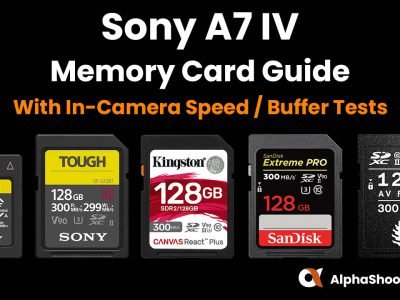
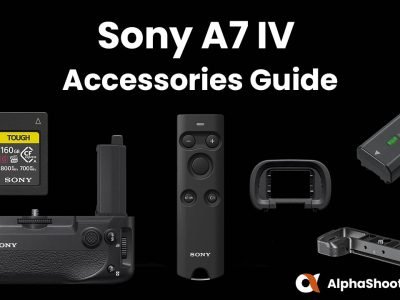
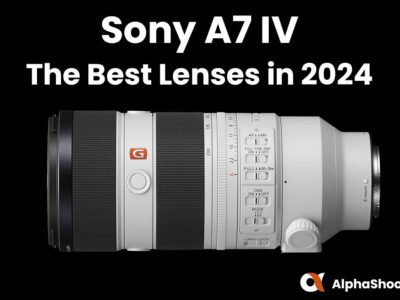
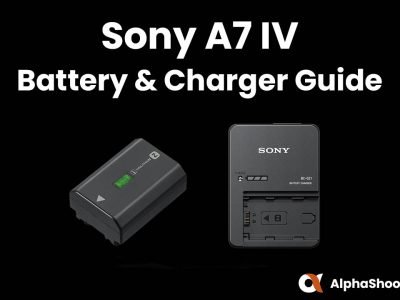
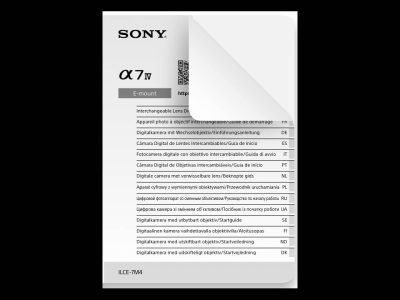
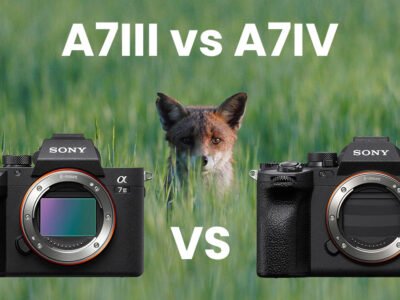

Can the a7IV wirelessly tether to an iPad (take a photo with the camera and it transfers – and shows up – automatically on the iOS device)? The a7RIV can do this, but everything I’ve read about the A7IV is vague and confusing. The only thing you mention here is that it can tether with a USB cable… and that it “adds 5GHz band wireless,” but that could just be for manually transferring images after they’ve been shot. If you could please clarify, it would be greatly appreciated.
Does a74 have all magnesium body like a7r3, or just top and front like a73?
Good question William! It’s very hard to tell just by looking at the camera, the material on the front and top looks very similar to the rear, even comparing to my own a7R III and a7R IV which have full magnesium bodies. But after a little digging it appears that magnesium is used for the top cover, front cover, and internal frame on the a7IV, so not the rear. I found this on the Sony Japan website, you might need to translate it into English though unless you speak Japanese.
Nice comparison. I have a question. Is it not possible to view length of video clip during playback? I cant seem to find such a setting in my A7iv.
Good question. If you change the Playback Target View Mode to “Movie View” then now when you hit the playback button you should see the movie length before you hit the play button. You might need to hit the DISP button if you can’t see it. It doesn’t seem possible to display it during playback though.
WOW Thanks Timothy for this great comparison. I ordered my A7IV November 1st here in Canada and I cannot wait to use it on a video project alongside my FX6. Would it be possible to upload some SLog3 and SCinetone samples? Looked all over the internet and there is nothing available to play with. Thanks and keep up the good work.
Hi Patrick. Glad to hear that you found the comparison helpful. I’m fortunately to have received my a7 IV now as I’m in the UK. However, I don’t shoot a great deal of video so although I will shoot some and upload the samples, it might take me a few weeks I’m afraid. With the cameras now shipping in Europe I expect there will be many sample videos released over the coming days and weeks. It’s definitely a big step up over the a7III and I’m enjoying using it, especially the bird eye af.
Tenho dificuldade com o flash da minha A7riii.Ele cria uma imagem falsa. Com o visor ativado. Uma imagem mais clara, e se me guio por ela a foto fica mais escura.
Existe alguma forma de desligar isso. Na 7iv isso foi ajustado?
Obrigado
Thank you also for the quality comparison. Is there any information out yet regarding the larger resolution sensor’s comparative performance for noise at high ISO? My recollection is that this is one area where the A7iii greatly excels, even over higher-end bodies.
I’ve not seen a direct low light comparison with the a7III yet, although there are a ton of videos out there so I might easily have missed something. Gerald Undone takes a closer look at the low light performance of the a7IV in this video, but he doesn’t make a direct comparison with the a7III unfortunately.
Does the new A7 feature any improvements to the electronic shutter from the higher level cameras? (i.e. less likelihood of banding)
Not that I’m aware of. It has the same anti-flicker feature as the a7 III. What the a7 IV does have however is the Variable Shutter feature found in the A1. This allows you to manually adjust the shutter speed while checking the impact of flickering on the monitor. This helps with detecting flickering with a frequency of 100 Hz or 120 Hz (such as fluorescent light) and flickering with a frequency higher than 100 Hz or 120 Hz (such as LED light).
Very comprehensive Tim thanks for that. From what I take a bit of everything I don’t know if it’s going to help all that much happy with my A7iii & A9 . liked the idea about the 2x converter that’s something that I very rarely use so that may help for the wildlife. Can always dream about A1.
Cheers Malcolm. It took a little while to pull it all together, there are quite a few changes! You already take great photos so I certainly don’t think you need to upgrade your A7 III, just keep saving those pennies for the A1 🙂